Ailey Trio - 2023 January Tour
And my own musings as a troup from an historic dance company tours through history in the country's middle.
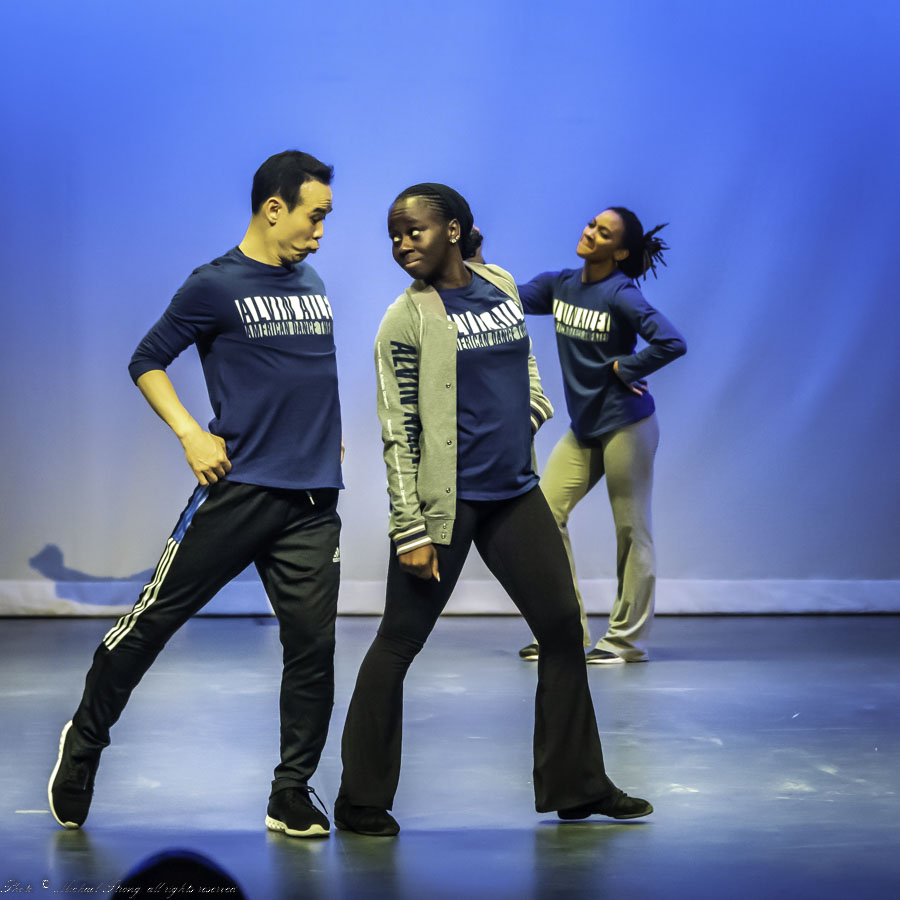
Performance in The GEM, Thu 12 Jan 2023, 7 pm: Kanji Segawa and Yazzmeen Laidler (front) and Jacqueline Harris (upstage)
With Ailey Dancers: Kanji Segawa, Yazzmeen Laidler, Jacqueline Harris
NOTE: All photos of The Trio and of Kansas I-70 and are by Mike Strong, copyright held but granting full usage permissions for
the dancers, the sponsoring parties, the three schools (Holy Family, Eisenhower, Landon), Jason Jones,
AAADT (Ailey),
KCFAA as appropriate (mainly The GEM) and The Links also as appropriate (mainly the schools).
The Ailey Trio was started in 1992.
Once a year, they hit the road visiting schools and giving performances wherever they go.
They talk about being dancers, about Alvin Ailey, about the company,
about dance and then they bring the audience on stage with them.
These pictures are from
3 Schools in Topeka, Kansas: Holy Family, Eisenhower, Landon
The GEM Theater, Thursday January 12, 2023
Presented by Kansas City Friends of Alvin Ailey
http://www.kcfaa.org
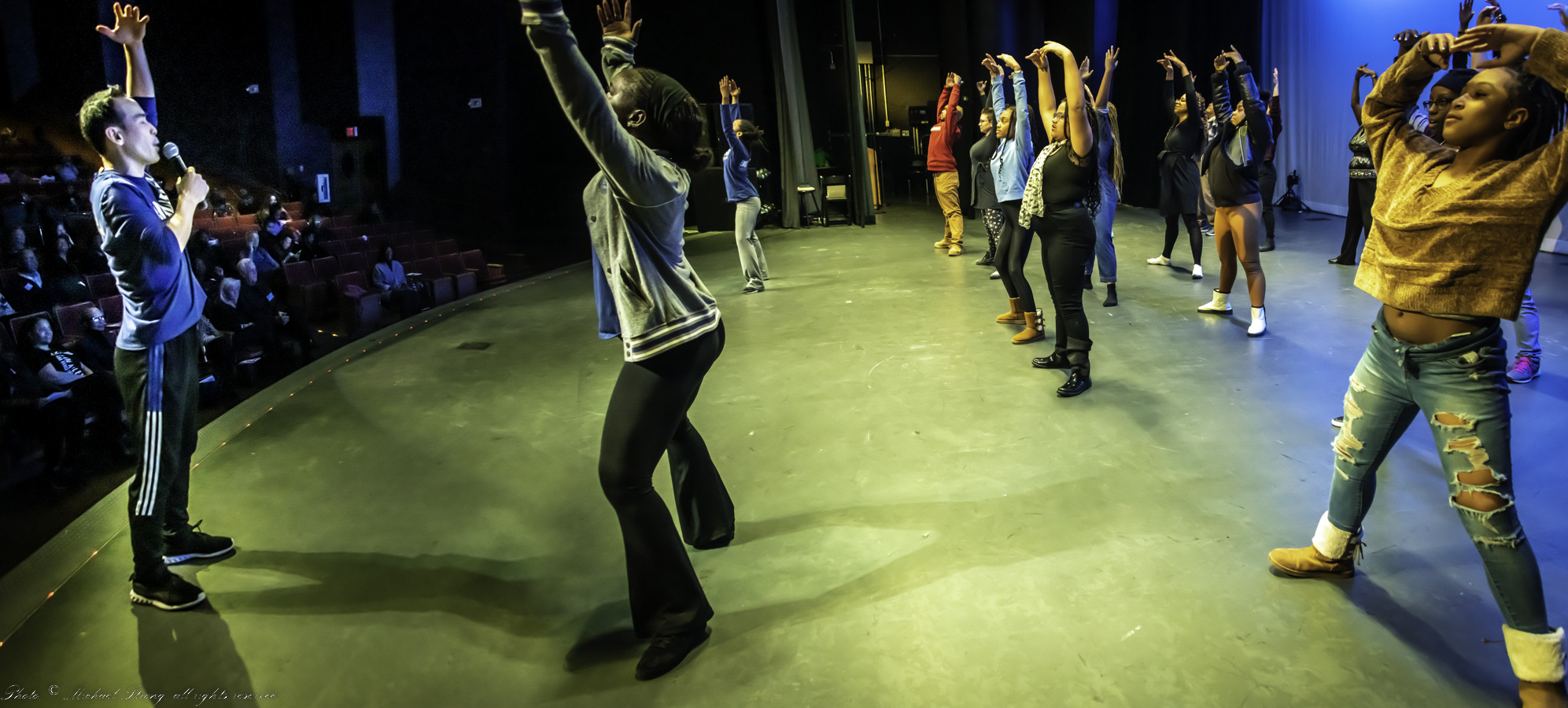
Audience Participation for the Thursday performance in The GEM Theatre. From left: Kanji Segawa, Yazzmeen Laidler (near) and Jacqueline Harris (down stage right)
Ailey Trio, Topeka, The GEM -January 2023 On Tour and Getting to Martin
RAMBLINGS on a mere two days of following Ailey Trio. The first day, Tuesday the 10th of January 2023, the Trio gave shows to three schools in Topeka, Kansas, stopping for lunch and respite at the home of the sponsoring organization. The second day, Thursday the 12th of January was in Kansas City, Missouri at The GEM theater with a similar program for the community at large, with KCFAA (Kansas City Friends of Alvin Ailey) presenting.
As much as The Ailey Trio was touring schools in the area, brought in by KCFAA, bringing a personal introduction the Alvin Ailey and his organization, they were also touring through a lot of history in Kansas itself. I found myself reflecting on bits of that history as we traveled between locations, especially in Topeka.
The interstate is a child of Kansas-raised (Abilene) President Dwight David Eisenhower, who also led the allies to victory in Europe in World War II. I-70 is one of four sections of Interstate named after him and I-70 in Kansas was where construction stated in 1956.
Then there is Brown v Board of Education and Thurgood Marshall, and maybe even Mark Twain via a prominent Baltimore black attorney and councilman.
And, as a journalist, watching another journalist parachute in, which is typical of news organizations, especially TV stations, a few reflections of news coverage. More on that later and why I "identify as" a "journalistic" these days.
And then of course, this was the week before Martin Luther King day, the following Monday. That also coaxed a few thoughts from me.
Tuesday, January 10th, 2023
As the photographer, I needed to get started in the wee hours of the morning, just to double check my equipment and to make sure I am there in time to picture the dancers arriving. I pulled out of my driveway at 5:15. As someone who shoots in theaters for evening performances, then downloads and processes images and video through the night, I am more used to going to sleep at 5:15.
I made sure my batteries were charged the day before, fresh batteries loaded in radio mics, all cameras' media cards were formatted and all dates and times in all cameras set to the second. That is especially important in the Black Magic Pocket Cinema Camera which I am using for wide angle coverage which, for some reason, consistently fails to keep the date and time current when shut off.
The wee hours check is to make sure of my equipment, especially because I will be traveling from Kansas City to Topeka, 75 plus miles away from any resources at home.
The Road

I-70 looking at the westbound lane from an overpass - 7:40 pm April 9th 2019.
Once I loaded my gear into the van, I pulled out of the driveway at around 5:15 am, heading north to the exit onto I-35 north to KCMO and then a left turn onto I-70 west at the downtown loop. From there it is about 20 miles west to the toll road and another 50 miles until I exit the other end with a $4.00 charge. It wasn't long ago the charge for that section of road was $3.25. Then $3.50 only a year ago. Just in the last few months the charge inflated to $4.00.
History note: This toll section is one of only two toll-road sections on I-70. The other is on the Pennsylvania Turnpike.
Anyway, I make one stop, at the first station just east of Lawrence, to pick up an egg and sausage biscuit from the MacDonald's at that stop. I haven't eaten since the afternoon before. I need some quick energy, but nothing heavy.
My exit is west of the toll booth and just east of Topeka, just before I-70 turns north to go around Topeka. Exit 363 westbound comes out at Adams Street. I take a right turn, heading north to Holy Family School at Our Lady of Guadalupe Catholic Church. Adams turns into NE Chandler, running to northeast Topeka until I reach 201 NE Chandler Street. I pull in at 6:45 am.
Holy Family - 8 am
Holy Family School, K-8
Cuevas-Balandran Activity Center
201 NE Chandler, Topeka KS 66616
As I pull into Holy Family School's parking lot, I triple check my map and my schedule to make sure I am in the right place. No one is here so far. The dancers are not scheduled to be there until 7:45 am, another hour exactly. I prefer being early, just in case.
The audience will be K-8 students and some parents, all sitting in the bleachers on the west wall of the Cuevas-Balandran Activity Center on the north side of the property, underneath a colorful full-width mural.
So, less than an hour early (I need to be there on the ground and ready before the dancers who are scheduled for 7:45). I sit outside, in the parking lot until an SUV pulls up. Rita (I learn her name later) is there to open the building. She asks whether I am with the dancers. I say that I am. I tell Rita I am there to shoot pictures and video. Rita tells me I can park next to the door of the activities center.
I start pulling cameras and tripods out of the van and setup tripods along the cafeteria wall. The Cuevas-Balandran Activity Center is a standard school center basketball court auditorium with cafeteria kitchen. On the west side, opposite the entrance, is bleacher seating. The wall colors are vivid yellows and browns. This is a largely Latin-American student body. Above the bleachers is a full wall-width mural in bright colors. I take several pictures. I love that mural - and the bright, warm, saturated colors. Reminded me of Mexico.
Did I mention that these are young kids, at Holy Family, the Trio is here for K-8th grades. When the arrangements were made the early performance time of 8:00 am was questioned. Did it have to be that early? This is a 1.5 plus hour trip. But the kids are young, and their parents have been invited. The parents will need to get to work after and the kids are too young to wait patiently in their seats.
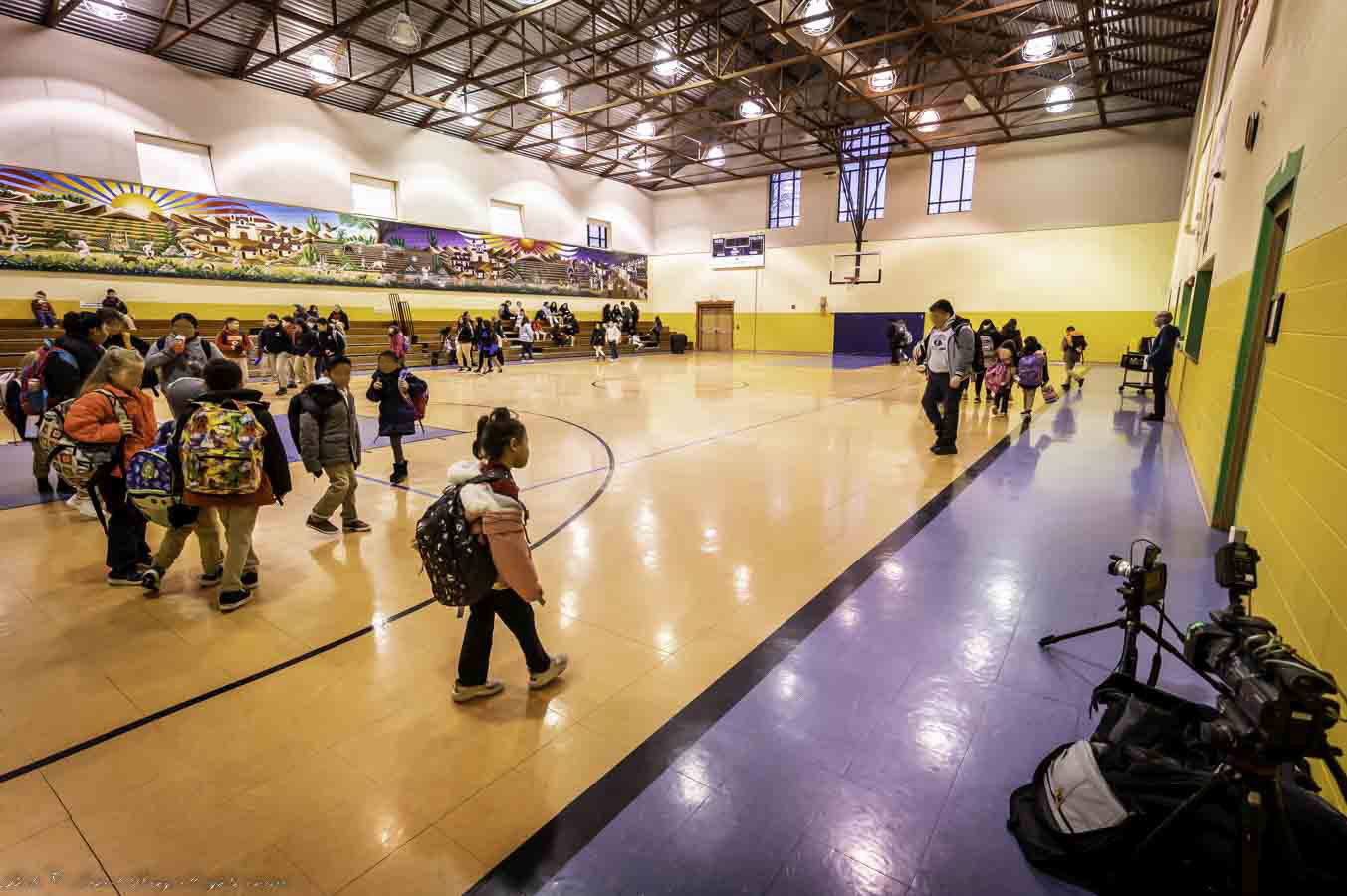
Early student heading around the floor in the activities center before the dancers arrive
I realize that last bit when the young kids enter the auditorium. The teachers have them walking at a fast pace around the floor. I watch this for a bit before I realize that the teachers are burning off the kid's energy so that they will sit through the show with minimal fidgeting. I'm trying to remember whether my teachers did that to us at that age. I don't remember but I suspect this kid-management method was in practice in the 1950's, when I was their age, and probably long before. I have to laugh, trying to remember.

Arriving at Holy Family and going in to the activity center: L-R: Jacqueline Harris, Kanji Segawa and Tyrone Aiken.
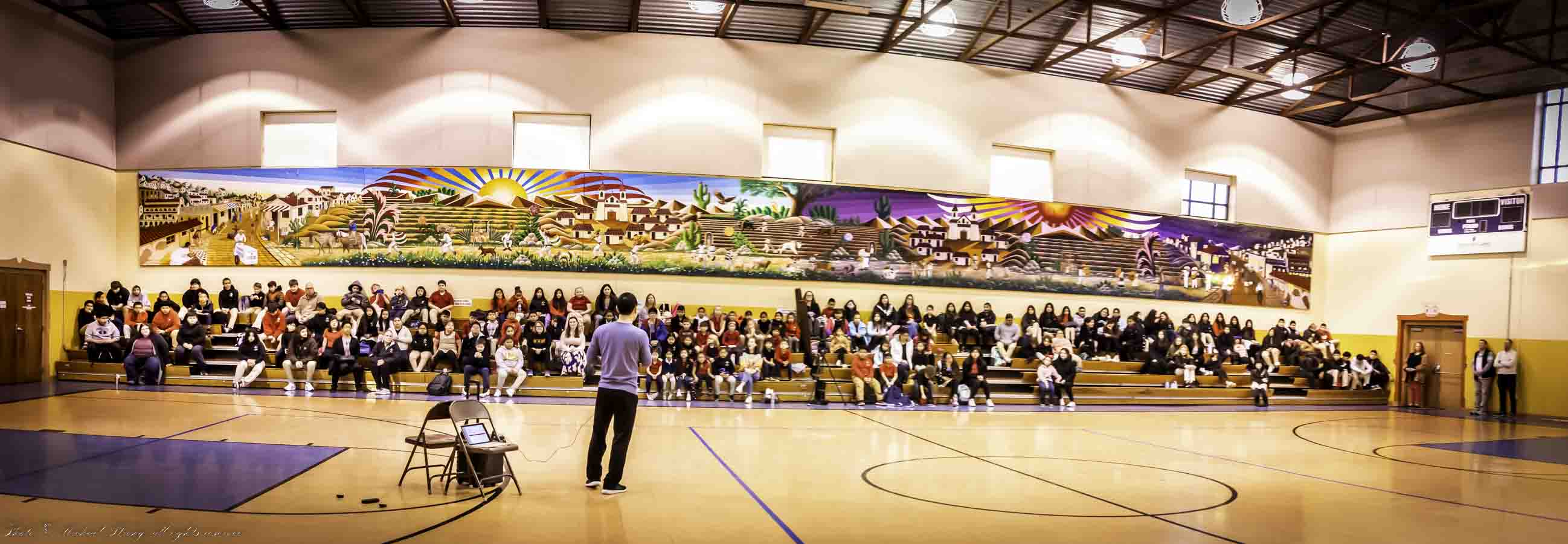
Kanji talking to the students, teachers and some parents at Holy Family, introducing the Trio and talking about Alvin Ailey
- Love that mural.
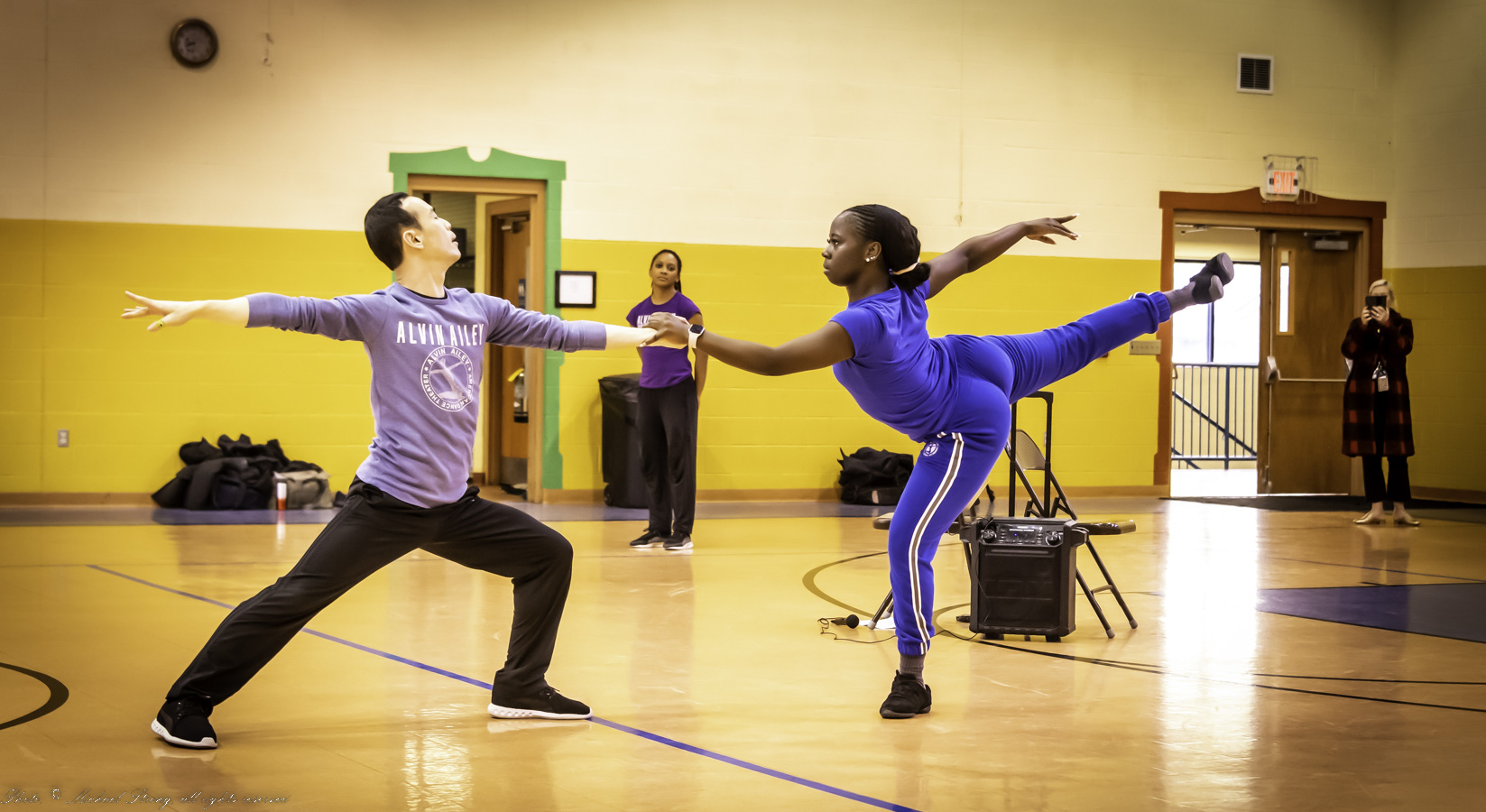
Kanji Segawa and Yazzmeen Laidler (Jacqueline Harris behind).
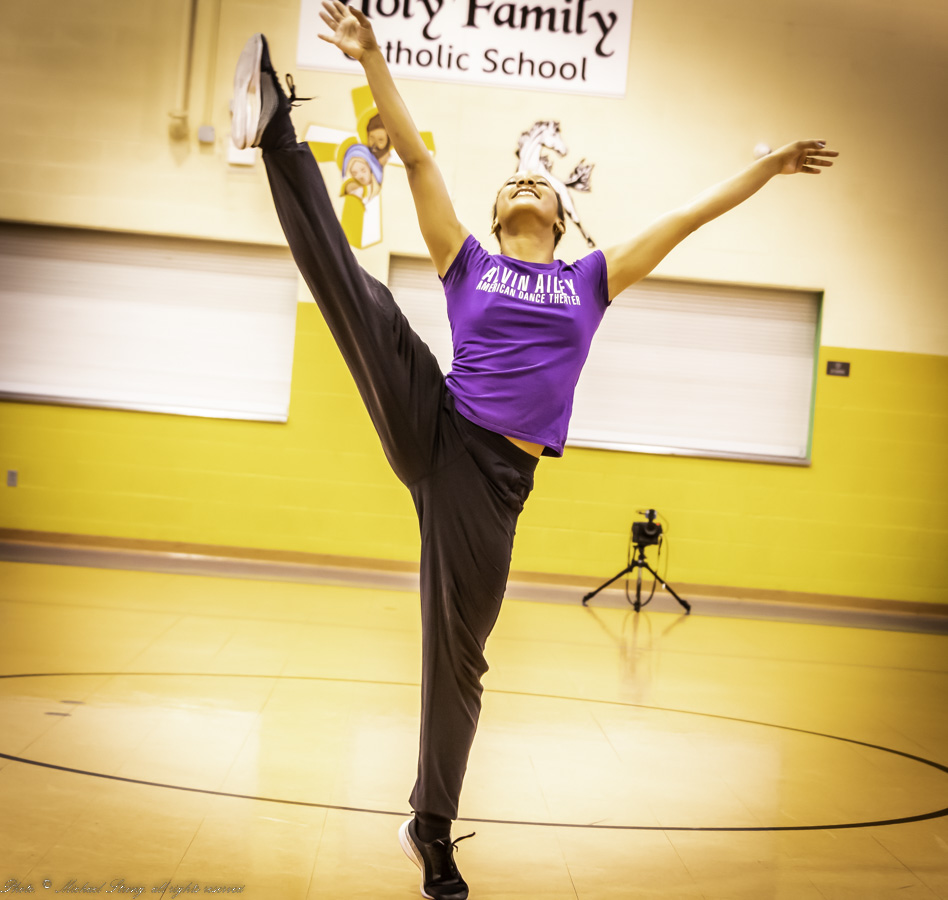
Jacqueline Harris
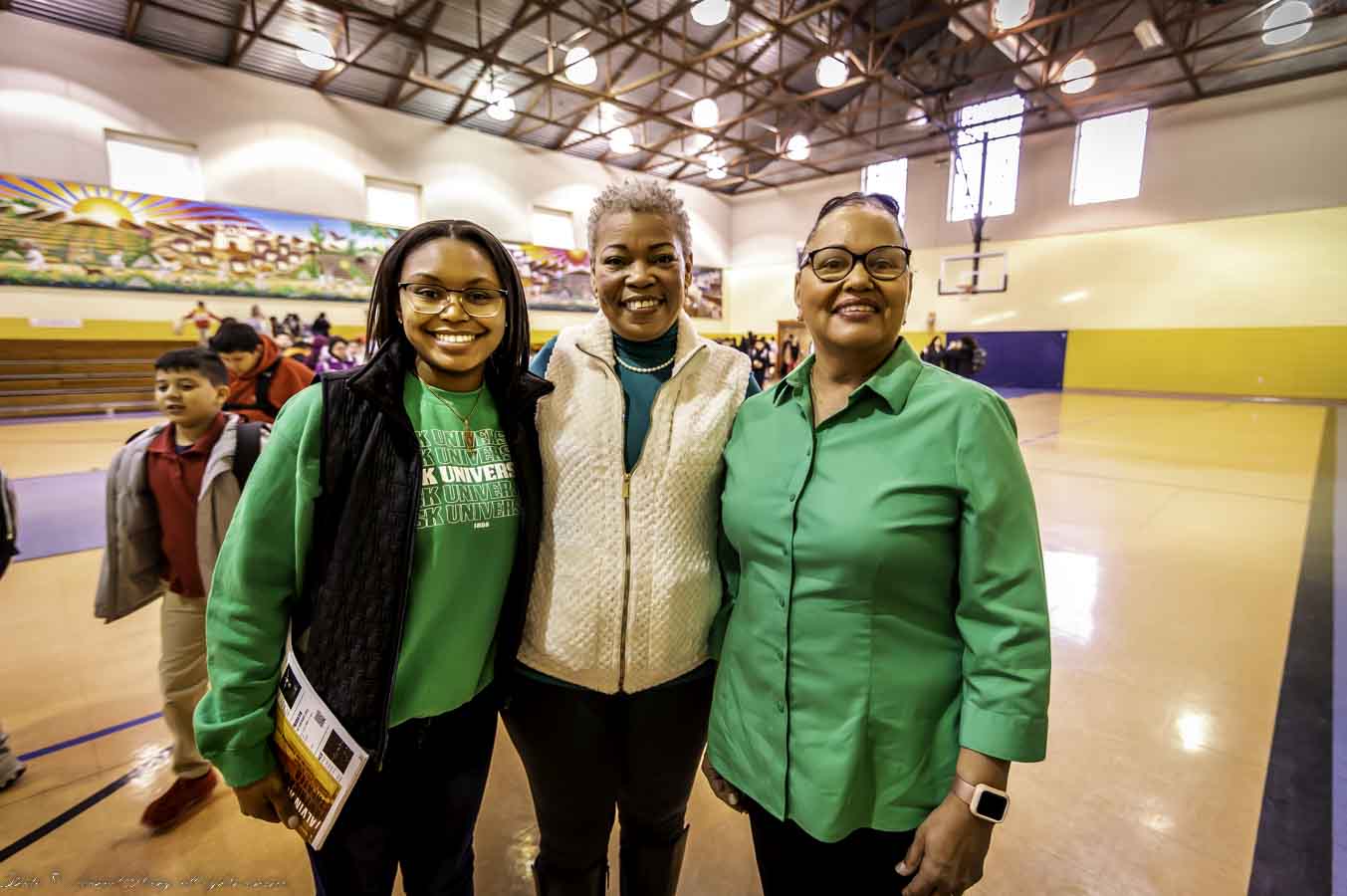
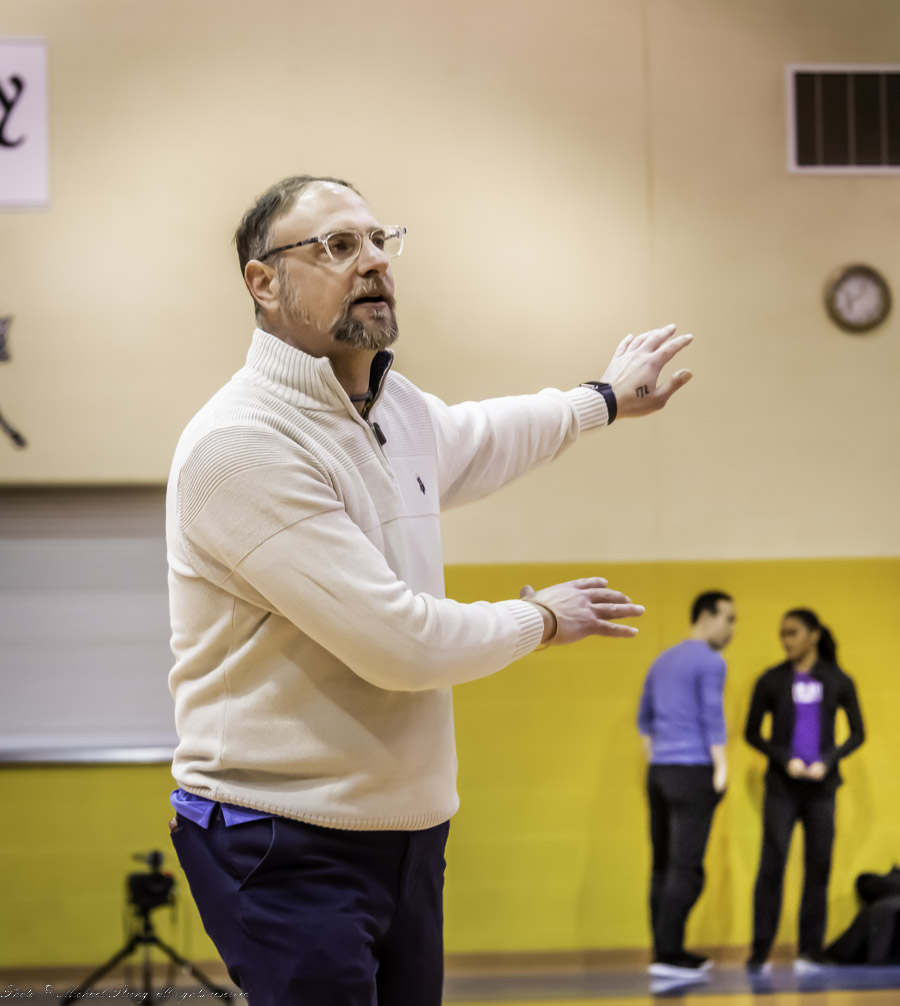

Top Left: Principal Travis Lamb
inroducing the Trio
Top Right: Trio setting up - boombox in front
trio, sponsors and greeters in back, Jacqueline Harris and Kanji Segawa at left, Trone Aiken the Travis Lamb at right
Travis Lamb, principal of Holy Family greeted us then introduced the Trio to the students. He was eager to his school to bring in the trio.
Schedule to come
The Ailey Trio Dancers this year are Kanji Segawa, Jacqueline Harris and Yazzmeen Laidler. I've known Kanji across several years of visits. All of them are Ailey company dancers and after this week they return to New York City to prepare for the full-company - Alvin Ailey American Dance Theater - tour, February through May.
The full Alvin Ailey company schedule is tight, perform two nights and travel two days repeatedly, across the US and Canada, starting February 4th and 5th in Toronto. They will be in this area in March for two days at the Kauffmann Center in Kansas City, Missouri and Lincoln, Nebraska one night before that.
Today in Topeka, The Ailey Trio, will take in a lunch at the home of Monique Pittman-Lui, one of The Links LLC members, Topeka Chapter.
The Links is a national invitation-only organization, founded in 1946 Philadelphia, by Margaret Hawkins, Sarah Scott and 5 other women "to respond to the needs and aspirations of Black women … (in ways) civic, educational, and cultural." Topeka is one of 300 national chapters with some 16,000 prominent black women. Monique contacted me to cover the Trio's visit to Topeka.
https://en.wikipedia.org/wiki/The_Links
http://www.topekalinksinc.org/
Two days later, Thursday, I will shoot video and stills of the Trio at The GEM Theatre in Kansas City, Missouri on Thursday night at 7 pm, brought in by KCFAA (Kansas City Friends of Alvin Ailey).
Driving Near Brown v Board

The arrows show the travel route for the Trio into and around Topeka. The circle shows where the historic site is for Brown v Board.
After the 8 am Holy Family performance, the next performance is for 10 am at Eisenhower in the southeast, followed by a break with lunch and then Landon School on the northwest side of Topeka at 1 pm. As they travel, they will be skirting the National Parks Service memorial to Brown v Board of education. I couldn't help thinking, as we drove from Holy Family, south on Branner into SE Adams Street, as we passed 15th, that if we had turned right on 15th street, we would very shortly come across the Brown v Board of Education National Historic Site.
It seems a natural tie-in to me, this trio of Ailey company dancers reaching out to introduce school kids to the work of Alvin Ailey in the city of Brown v Board.
This is in the city named as the lead litigant (five cases were combined, this one from Topeka and five from the East Coast) in Brown v Board of Education, decided in 1954 by the US Supreme Court. Thurgood Marshall was the lead attorney. He would go on to become one of the most celebrated judges on the US Supreme Court.
According to one set of stories, Marshall was mentored as a young man by a black lawyer, Warner T. McGuinn, whose Yale education was paid for by Mark Twain in the 1800's.
McGuinn, born to free blacks in 1859, graduated from Yale Law School, number one in his class of 1887. He had started at Lincoln University in Springfield, Missouri, then attended Howard before getting an offer from Yale. He didn't have money to go to Yale, which is when Twain stepped up with money, as a personal reparations effort.
McGuinn began his law practice in Kansas City, Kansas until he moved to Baltimore in 1892 where, in 1917, he successfully argued that segregation in Baltimore was illegal. McGuinn was also an activist for women's right to vote (suffrage) and was elected to the Baltimore city council twice.
And McGuinn mentored a very young Thurgood Marshall, after he graduated from Howard University Law School where he was mentored by dean of the law school, Charles Hamilton Houston. Thurgood Marshall would graduate in 1933, first in his class.
Marshall went to the black Lincoln HBCU in Pennsylvania - there is also a black Lincoln College which shut down in 2021 because of COVID's economic effects.
There seem to be two camps. The other set has Marshall being mentored at Howard Law School by Charles Houston before going to Baltimore to start a practice which seems not to have been successful due to his civic-mission activities. Neither camp mentions the other mentor - at all. And, of course, they get copied repeatedly, sometimes, as in the telephone game, embellishing when they run out of details or just leaving connecting details hanging.
I decided to forget the web document search. Too many sites copied each other and usually skimped (skimmed) on detail and depth. So, I went looking for books and immediately struck pay dirt with a 1998 biography by Juan Williams, "Thurgood Marshall: American Revolutionary" published by Random House. Finally I had a detailed account with both McGuinn and Houston woven together.
Marshall passed the bar exam on the first try October 11, 1933. He had an academic offer for more study but he wanted to earn money, badly. To be independent. The best known black lawyer in Baltimore was Warner McGuinn. Marshall asked for advice from McGuinn. Juan Williams describes McGuinn and the encounter as, "a small, cocky, Yale Law graduate, who looked close to white and was a former city councilman. Already in his sixties, McGuinn had recently hired one young black lawyer, W.A.C. Hughes, when Marshall came to see him. But McGuinn could not afford another legal associate and did not even listen to Marshall's request for a job." Even though, McGuinn told him that he had watched Marshall's progress.
Still McGuinn did help Marshall set up his office in the same building, and did counsel him on "on the personalities and politics of judges, prosecutors, and cops. He also encouraged Marshall not to give up, even when money was so short that the novice had to take a part-time job as a clerk in the venereal disease section of the city health clinic."
So, not an auspicious start. For a while he shared a secretary with McGuinn and would get cases from the other lawyers from time to time. In his first year practicing law Marshall lost $3,500.
But his lack of work gave him more time to go on NAACP fact finding trips with his college mentor, Charles Houston. They would sit in a car with a typwriter on their laps. There were threats, enough that the Mississippi NAACP assigned a funeral hearse with two riflemen to drive with them as protection.
References notes for Marshall. Most of the web articles, whether original or from magazines shows non-embellishment to cover up that the writer didn't have details or embellishment where the writer didn't have details but punted with something which sounded as though it should fit, just to get it written and published, or at least posted.
5 stars ***** Juan Williams biography "Thurgood Marshall: American Revolutionary" https://www.amazon.com/Thurgood-Marshall-Revolutionary-Juan-Williams/dp/0812932994
Good read, by the way. Explains a developing interest in separate but equal cases which began with probes to make the white officials so afraid of integration that they would build a black high school. This eventually morphed into a focus which years later would culminate in Brown v Board. Williams' book answers a lot of questions the web sites left open.These links were mostly discards but serve to show the overborrowing and skimming of details.
Warner T. McGuinn and Mark Twain Links
https://aaregistry.org/story/warner-mcguinn-lawyer-born/ no mention of Marshall
says he went to Lincoln in Missouri (Springfield)
https://www.insidehighered.com/views/2021/10/07/mark-twain-was-american-lits-first-critical-race-theorist-opinion
https://stanfordmag.org/contents/mark-twain-s-inconvenient-truths
https://kazantoday.com/WeeklyArticles/warner-t-mcguinn.htmlMark Twain
https://aaregistry.org/story/mark-twain-born/ mentions McGuinn but not MarshallThurgood Marshall and Charles Hamilton Houston links
https://postalmuseum.si.edu/exhibition/thurgood-marshall/marshall-and-his-mentor
https://naacp.org/find-resources/history-explained/civil-rights-leaders/thurgood-marshall
https://en.wikipedia.org/wiki/Thurgood_Marshall
"At Howard, he was mentored by Charles Hamilton Houston"
went to Lincoln in PennsylvaniaCharles Hamilton Houston
https://en.wikipedia.org/wiki/Charles_Hamilton_HoustonTwo Lincoln Universities - HBCUs:
https://en.wikipedia.org/wiki/Lincoln_University_(Missouri)
https://en.wikipedia.org/wiki/Lincoln_University_(Pennsylvania)
Eisenhower - 10:30 am
Eisenhower Signature Music Middle School, 6-8th
3305 SE Minnesota Ave., Topeka, KS 66605
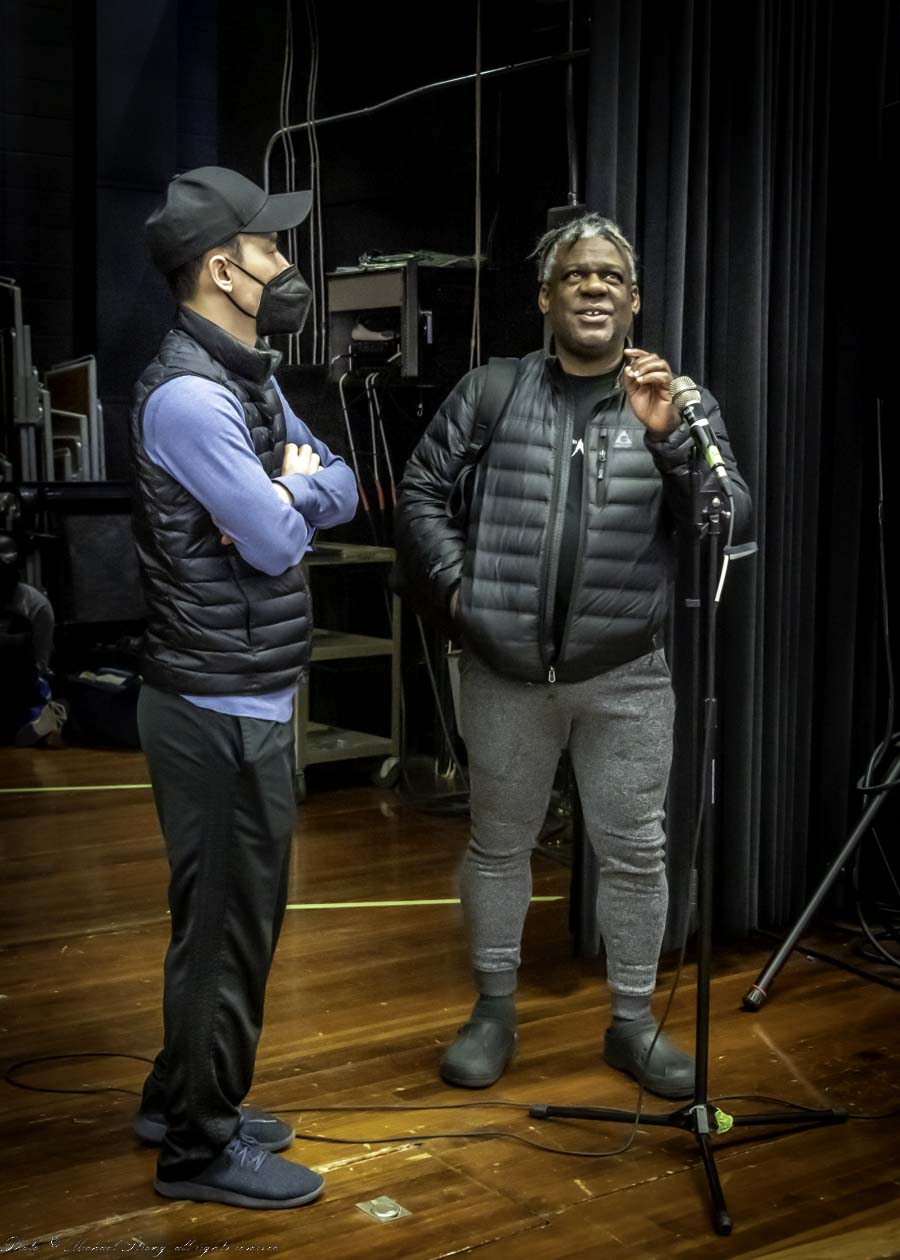
Kanji and Tyrone, getting into the stage at Eisenhower.
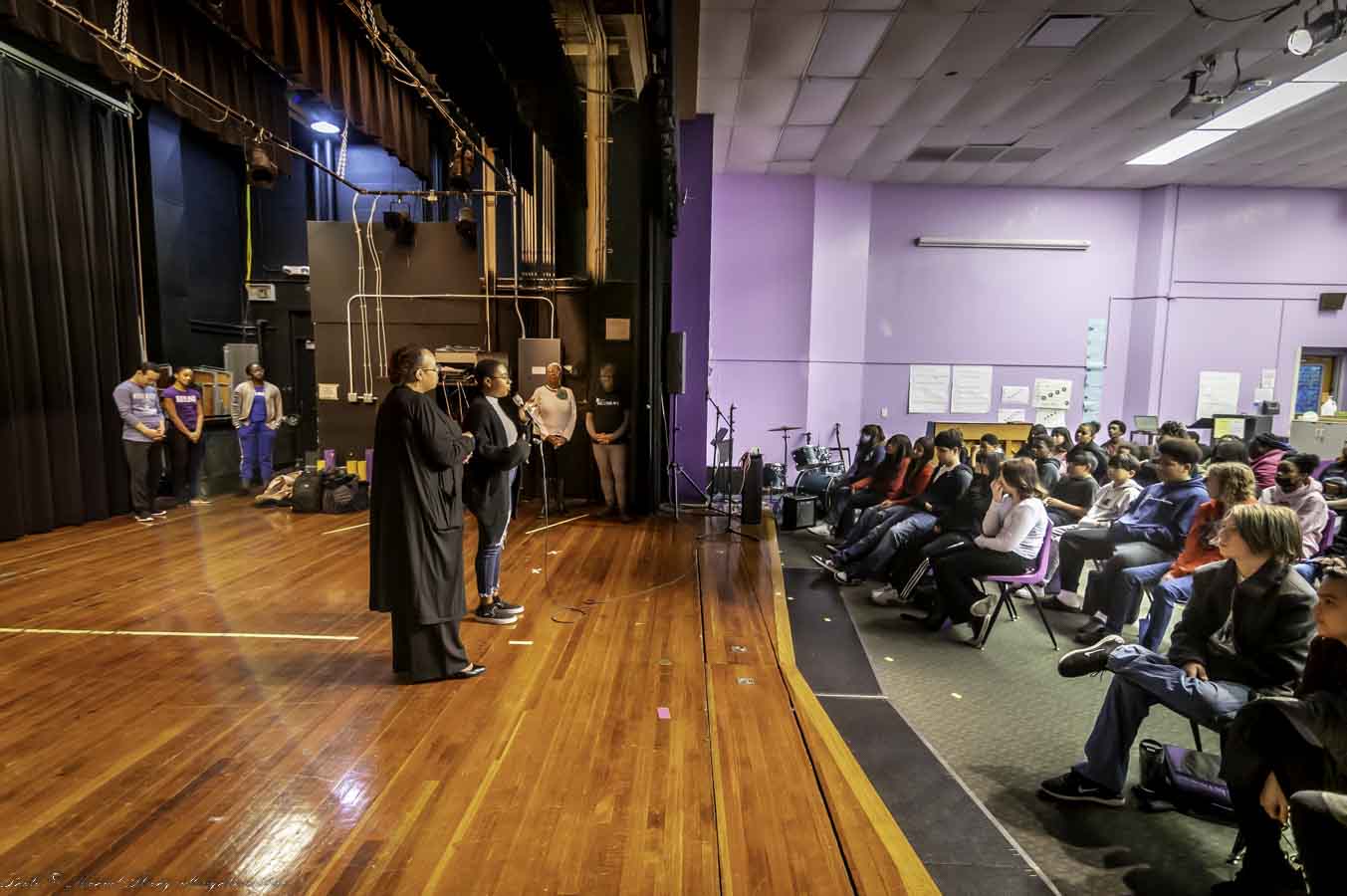
Welcome, introduction and AileyCamp Pitch at Eisenhower. The Trio, Kanji, Jacqueline and Yazzmeen are in the upstage left corner with their bags in front of them on the floor. Monice Crawford (Links) who's just given the welcome and Tyrone are in the wings, downstage left. Then the AileyCamp pitch. Speaking is
former AileyCamper Tenuel Jackson, introduced by her aunt, Links member Tara Wallace (standing, this side of Tenuel). Once done, the Trio takes over.
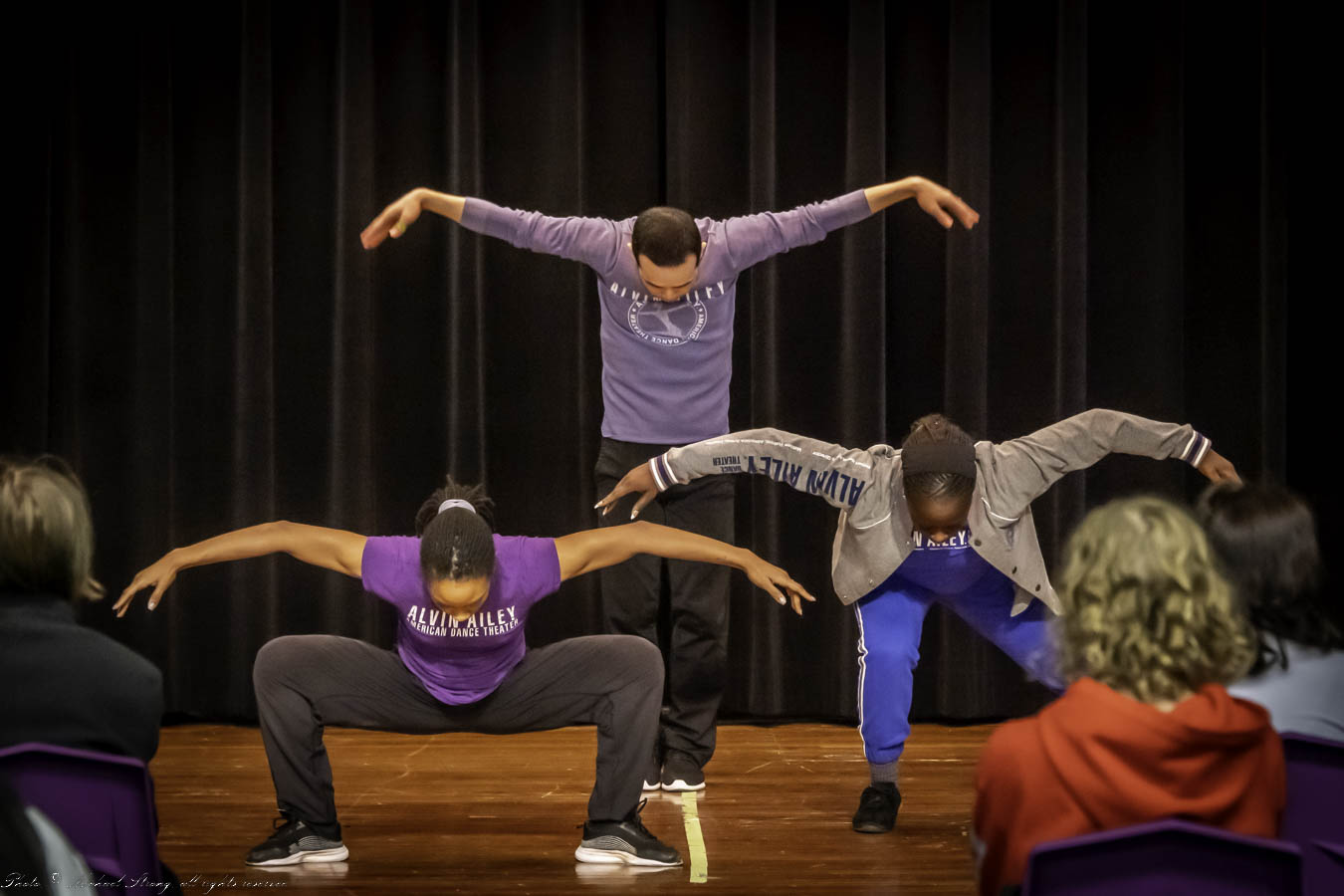
"I Been 'Buked"
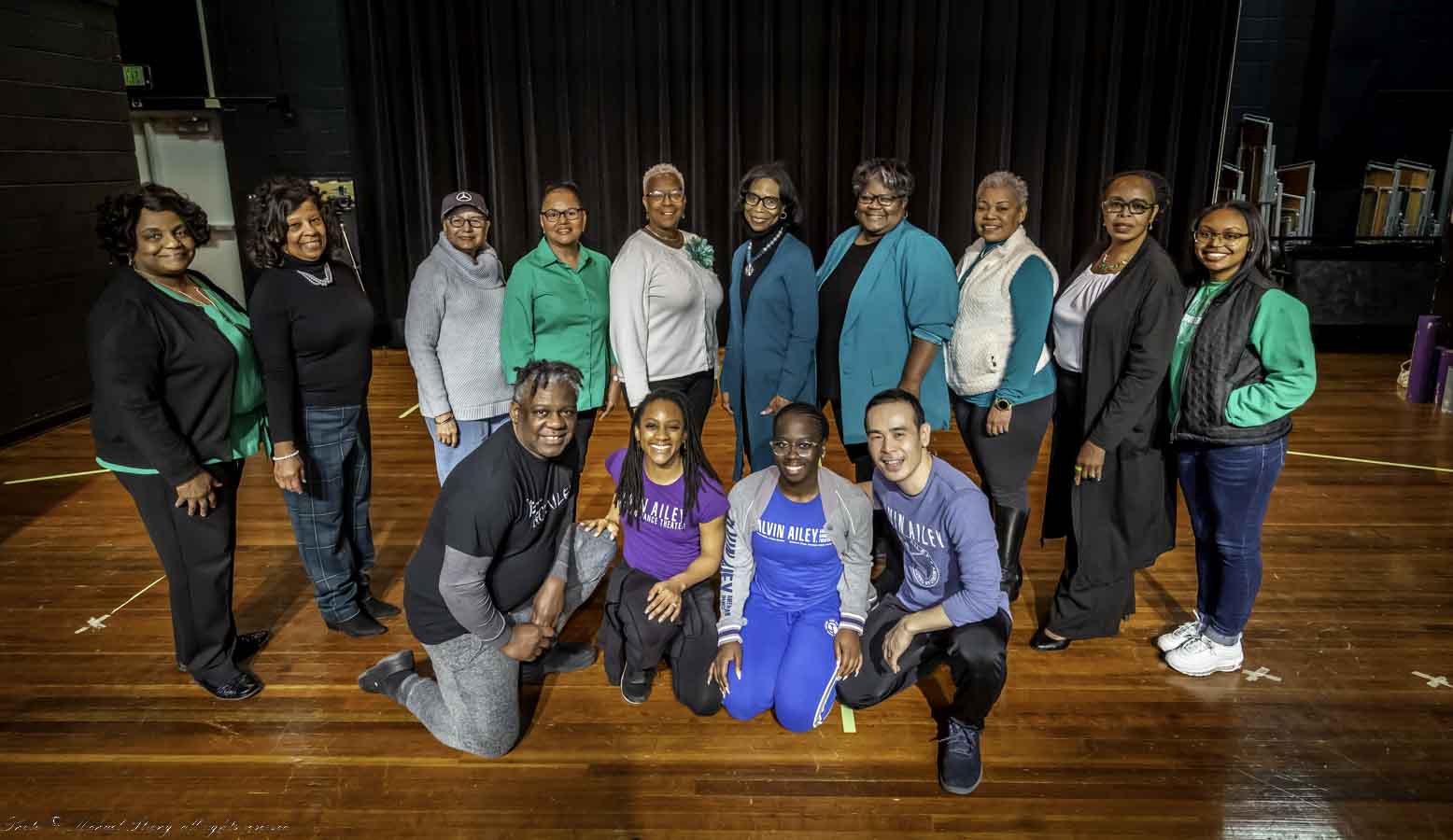
Topeka Links in back with Tyrone Aiken and the Trio in front: Jacqueline Harris, Yazzmeen Laidler and Kanji Segawa
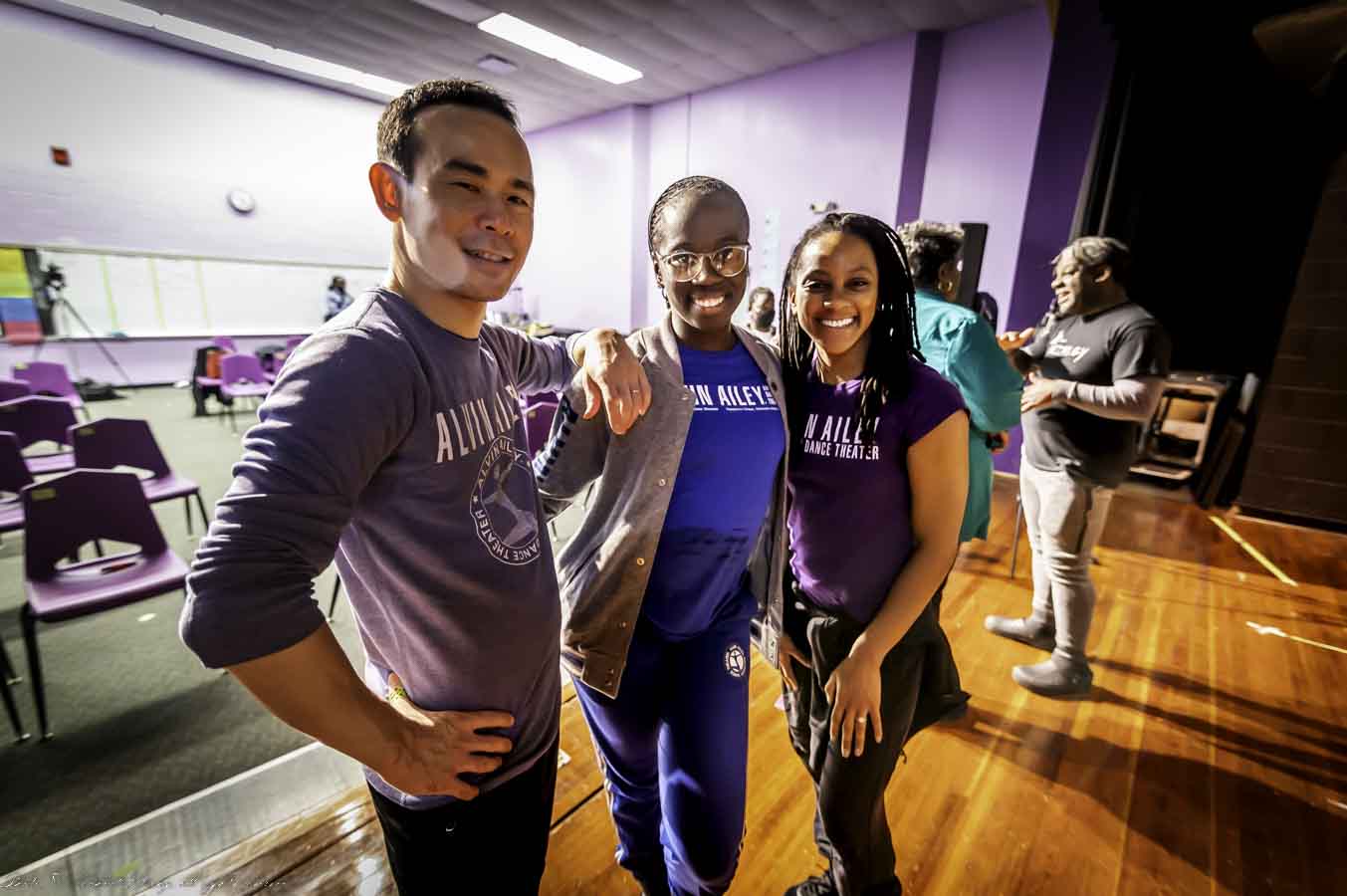
After performing at Eisenhower, Kanji Segawa, Yazzmeen Laidler and Jacqueline Harris
Eisenhower Signature Music Middle School's performance area had a stage in a small-room theater. The stage was at a one-step height over the floor. So, there was regular seating for the music students. This also meant that I had a lot of the backs of heads in pictures and video so a few times I crept up to the front of the stage for some very wide-angle, close-in video. Also, I positioned my BlackMagic Pocket Cinema Camera with a wide angle lens upstage, pointed out at the audience.
There is other history here as well. The very highway, I-70, which runs east-west through Kansas is one of the four interstate highways in the United States with the designation of the Dwight D. Eisenhower Highway. I-80, I-25, I-70 and I-270 get the label.
On June 29th,1956, President Dwight Eisenhower signed the Federal Aid Highway Act, the moment today's interstate system began. Construction started in Kansas. Eisenhower, when commanding allied armies in WWII saw in the German autobahns a model for easy, fast and safe travel as well as a strategic asset for logistics, both military and civilian.
Eisenhower was very aware of our roads, having grown up in Abilene, Kansas and in 1919, as a young Lt. Colonel participating in the Transcontinental Convoy across the country. This was a military project to test military mobility on the nation's roads. 81 army vehicles, 3,251 miles, 62 days, 24 officers and 258 enlisted men learned how difficult travel could be.
This would form part of the basis for Eisenhower's campaign to create the interstate highway system. He saw good transportation systems as essential for national defense as well as commerce. Today, we can hardly imagine travel without it.
https://www.eisenhowerlibrary.gov/research/online-documents/interstate-highway-system
https://en.wikipedia.org/wiki/Dwight_D._Eisenhower_Highway
https://en.wikipedia.org/wiki/Interstate_70
https://www.eisenhowerlibrary.gov/research/online-documents/1919-transcontinental-motor-convoy
This was the first tour in three years for the Trio, because of COVID-19, today's pandemic. If, for some reason, the dancers were to travel to Abilene, another hour or so west of Topeka, the town where Eisenhower grew up, they would pass Fort Riley where troops training for World War I in Camp Funston, would contract and carry the Spanish Flu, one of the world's largest pandemics, just about 100 years ago.
Despite its name, "Spanish Flu" it originated in Haskell County, Kansas, the far southwest corner of Kansas, south of Garden City (US Highway 83) and Southwest of Dodge (US Highway 56). Patient zero, so to speak, was identified in February 1918 by Dr. Loring Miner. Young men, traveled from here, as a military recruits, to Camp Funston (Fort Riley) where this exploded into hundreds of cases by early March 1918. It got the name because the flu was identified in Spain. And that was because Spain was neutral during World War I and not subject to wartime censors. As such, news of the flu became headline fodder in Madrid in late May of 1918. So other countries thought it came from Spain. Spainish doctors, meanwhile, believed the flu came from France (likely from troops) and so in Spain it was called the "French Flu."
In case you are wondering, the flu made it across the lines, also infecting German troops. Neither side wanted the other side to know how much they were hit with the sickness, so they imposed censorship. The Spanish media, free from war censors, did the proper media job of letting the public know what was in the air, literally.
https://www.kumc.edu/school-of-medicine/academics/departments/history-and-philosophy-of-medicine/archives/wwi/essays/medicine/influenza.html
https://www.history.com/news/why-was-it-called-the-spanish-flu
https://www.history.com/news/1918-pandemic-spanish-flu-censorship
And, if they were to have traveled to farther western Kansas, the dancers would also have encountered some of the largest wind farms, producing enough electricity that even four years ago produced enough to supply 36-percent of Kansas' supply as well as selling electricity to neighboring states. They sit on farm and ranch land where many farmers stay in business because of the money from those generators, in much the same way they get money from oil wells. And, as the oil money eventually decreases, the windfarm percentages take up the slack from both public and private electric utilitiy companies in Kansas.
There are a number of farms and ranches running out of water. They've been pumping water from the underground ocean, so to speak, the Ogalalla Resevoir, for at least the last 60 years. Taking out too much water. It isn't being replaced by rains. Some places have already run out of water. The college town of Hays, with Fort Hays State University (FHSU) has been making arrangements, water pipelines, for the last five years or so to draw water from 70 miles south, as a hedge against going dry. Hays setup water conservation programs and changes to lawns with sustainable vegetation, since 1992 when wells came close to running out and they had to come up with solutions to save Hays. No water would mean no people. The simplest spreadsheet graph can tell you that.

Blade carrier truck, rest stop, I-70 westbound, east of Junction City, KS (Fort Riley is this side of Junction City).
Note how the trailer is able to telescope out to the length needed to hold the blade. That is about 200 feet.
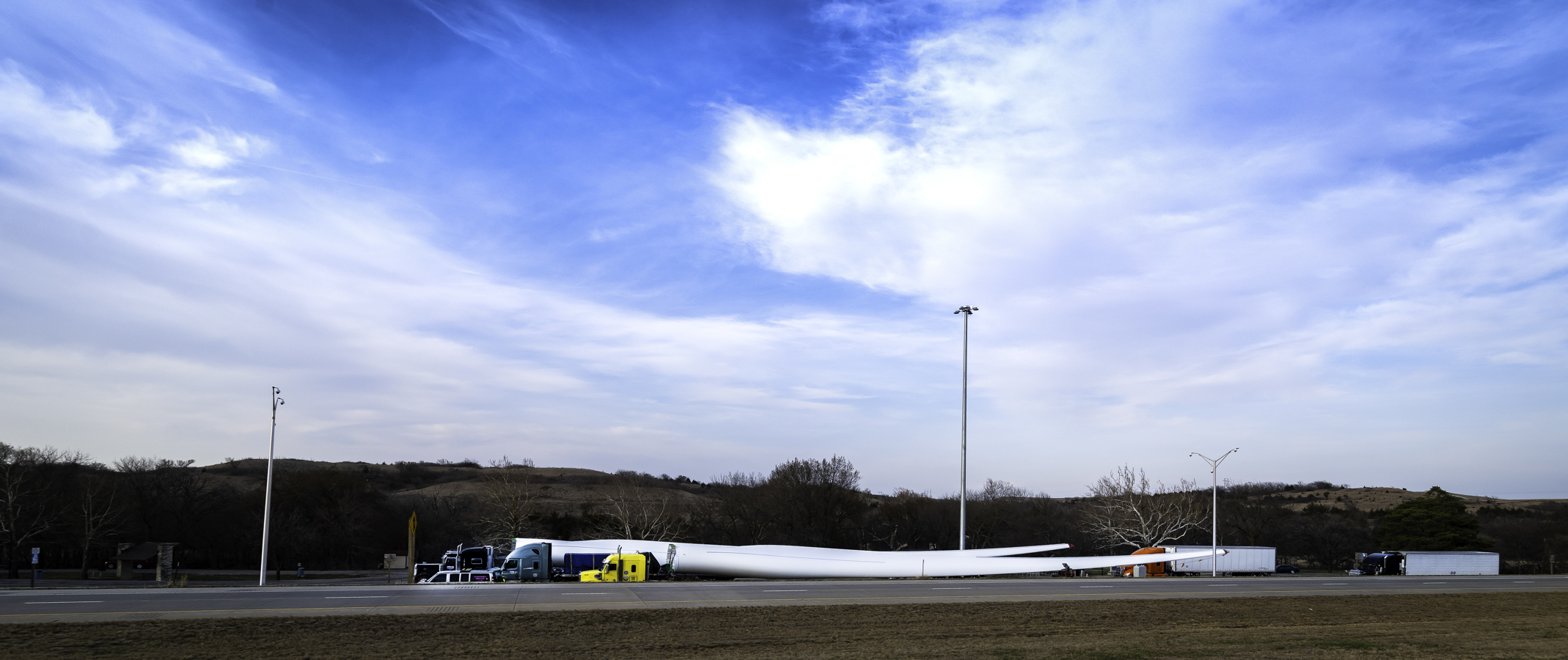
Two blade carriers seen from the opposite lane (camera out the driver's window) at the same rest stop.
It seems as if everywhere you travel in western Kansas, often with cows grazing next to them, there is a combination of wind generators and donkey engines (oil-well pumps filling holding tanks which are collected by tanker trucks). You also see specialized trucks used to haul new and replacement wind generators and their windmill blades, of 150-300 feet long each (double that for the diameter then add ground clearance height. Those windmills are huge. They all use the interstate, The Eisenhower Highway.


Signs of changing times.
Above Top: Two modes of power. Active filling station just off an exit from I-70 (the road is going over I-70) looking northward here. The Windmills are north of I-70.
Above Bottom:
An abandoned and mostly dismantled filling station on I-70, south side, looking southward here. I-70 exit is immediately to my backside.
BOTH images
have electricity-generating windmills spread across the background, horizon to horizon. About 50 and 60 miles east of Hays, KS.

"The Expanse" - 7:16 pm heading west on I-70, March 11, 2019, about 60 miles to go to get to Hays, KS. This long (telephoto) shoot gives an idea of the size of these generators
They have their own problems in terms of renewable parts, rare-earth metals, recycling components, constant voltage and varying electrical demands and storage requirements. Still, like the acquifer which is running out, global warming is at a threshold we cannot afford and political will almost certainly will wait until we do have disaster. At least that is the pattern for such things. In the meantime, technical problems are being tackled by engineers. Much as permanent-magnet engines for DC current are targeted by engineers working on induction motors. Keep hoping.
And, as with so many other advancements and eager, earnest solutions to problems can present their own problems, and usually do. It is in the nature of new developments. In the case of lithium-ion batteries, fire. These batteries carry a lot of energy per pound, and when they cook off they catch on fire and are all but impossible to put out. For the most part, the fire department uses water to control the spread until they burn themselves out.
"We" could also, then, in my musings and reflections note that Dodge City is in that SW corner of the state. It is east of Garden City where I submit a number of book reviews for inclusion in HPPR's Bookbytes (HPPR = High Plains Public Radio and is dual centered, Garden City, Kansas and Amarillo, Texas).
https://www.hppr.org/podcast/hppr-radio-readers-book-club#stream/0
Most of you are familiar with the television version of Dodge City because of "Gunsmoke." Those characters are fictions, though some real-life famous types lived there in the 1800's. Milburn Stone, who played "Doc Adams" was born in Kansas, Burrton, Kansas, which is between Hutchinson to its west and Wichita to its east. Vera Miles, born Oklahoma, raised in Pratt, Kansas (south, middle of the state), then Wichita, had a long and distinguished movie and television career.
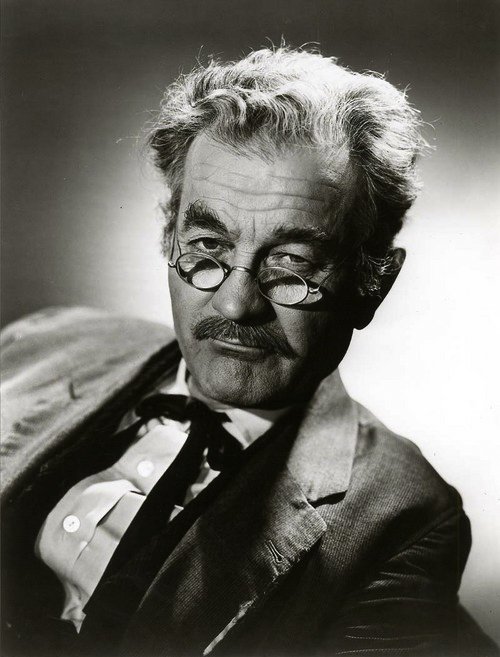


(left) Milburn Stone as Doc Adams
(right) Ken Curtis: (1) as lead singer in Sons of the Pioneers and (2) as Festus in Gunsmoke - public domain source
Ken Curtis, who played Festus on Gunsmoke, and five other one-time roles before his "Festus" became a recuring character, was early-on a band singer, hired in 1941 by Tommy Dorsey to replace Frank Sinatra. From 1949 to 1952 Curtis was led singer with the "Sons of the Pioneers."And despite his shaggy appearance on Gunsmoke, Curtis (birth name Curtis Wain Gates) was a handsome hunk who also had his own singing troup and who was born just to the west of Dodge City, across the Kansas/Colorado state border, in Lamar Colorado then moved to next-door Bent County where his father ran for shefiff. They lived below the jail, which was on the second floor, and his mother cooked meals for the inmates. He said that he based his "Festus" character, including the twangy voice, on one of the regulars in the jail, known as Cedar Jack, who showed up often in the jail, for drunkeness, a sort of real-life Otis character from the Andy Griffith show.
https://en.wikipedia.org/wiki/Vera_Miles
https://www.kshs.org/kansapedia/milburn-stone/18145
https://en.wikipedia.org/wiki/Ken_Curtis
This may seem like a big diversion, but I have a purpose. I keep a spreadsheet of movie, television and sometimes Broadway stars who come from "flyover country," what I think of, with a certain admiring awe, as "The Expanse." The data in my Excel sheet is nothing formal and I've not made it a special research project. Even so, I have 150 performers at this writing, and that is leaving out tons of smaller names we might not recognize. It is a reminder that the New York and Los Angeles companies, and other large urban companies get their dancers from tons of small towns.
Just as the Ailey dancers, in this case the Trio, reach out to the country, they, themselves, often come from smaller towns. I think of it as a talent circulatory system. Eventually, some of the performers who went from small towns to big cities return to small towns, completing the cycle.
Cities are great congregators where diverse people come together to share and show and learn and spread that learning. A sort of permanent convention where everyone gathers to show off the newest developments and hawk their wares, give seminars and bounce buckets of rubber chicken before indigesting after-dinner speakers.
New York has a population of 8.8 million proper and 23.5 million in its "combined statistical" area. Linguistically it is also the most diverse city in the world. More than 800 languages are spoken within its population. And - here we go - this is important and eye opening - more than 3.2 million residents are born outside the United States. Or, 36.4% of that 8.8 million.
Brief aside on population numbers: COVID, USPS, numbers for 5.5 years from June 2017 to Dec 2022: US Postal Service says that 2,878,212 people moved into NYC while 3,548,982 left, a net loss of 670,770. School enrollments are down: 9.5% public and 3.6% private. But that is an aside beyond my planned asides, and goes into "warehousing," for this article, so ... reference here: https://www.curbed.com/2023/01/nyc-real-estate-covid-more-apartments-higher-rent.html
That's not even counting all the people from here in the middle of so much country, this vaste reservoir of talent, who contribute, some of whom stay, many of whom return with what they have learned, contributing locally and keeping connections fresh between "here" and "there." As I look at it, places like New York City remain fresh and vibrant because so much of their population represents contributions from elsewhere. If they were all born and raised in New York City and spent their entire lives in the city, I think they would not be nearly so alive, so energized, so aware or so diverse. Essentially, I see large cities as redistributors of culture. When I see Ailey, I am always reminded, as Ailey makes a point of national and international outreach.
Lester Horton: A Racially, Ethnically, Diverse Dance Company
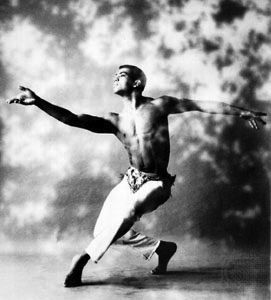
One of the impressions of the Ailey company is that they are a black company. You could easily think that. Still, Ailey welcomes and encourages a mixed company. That may come from his own mentor Lester Horton, a white dancer who pretty much introduced modern styles to California and who created his own dance company as a deliberately racially and ethnically mixed company, bold for the day. A performance by Denishawn (Ruth St. Denis and Ted Shawn) in 1922, when he was 16, started his dance career. At 19 Horton auditioned and for a former Denishawn dancer, Forrest Thornburg, and toured with him, learning much of the Denishawn repertoire.
One of the kids, at Eisenhower, in the Q&A session at the end asked about that, noting that not all the dancers, even in the trio were black, such as Kanji who replied that Ailey is a mixed company, as part of its mission of acceptance and tolerance. The Horton Technique remains a staple of the Ailey Company's training methods.
When Lester Horton died in 1953, Alvin Ailey kept the Horton company going until 1958 when he moved to New York, starting his own company, the Alvin Ailey American Dance Theatre. With him were other Horton dancers, among them Carmen de Lavallade, Joyce Trisler, and James Truitte. When Joyce Trisler died Alvin Ailey created "Memoria" in her honor.
https://en.wikipedia.org/wiki/Denishawn_school
https://dancespirit.com/horton-technique/
https://www.alvinailey.org/alvin-ailey-american-dance-theater/lester-horton
http://www.dancehistoryproject.org/index-of-artists/lester-horton/
Interlude - Noon

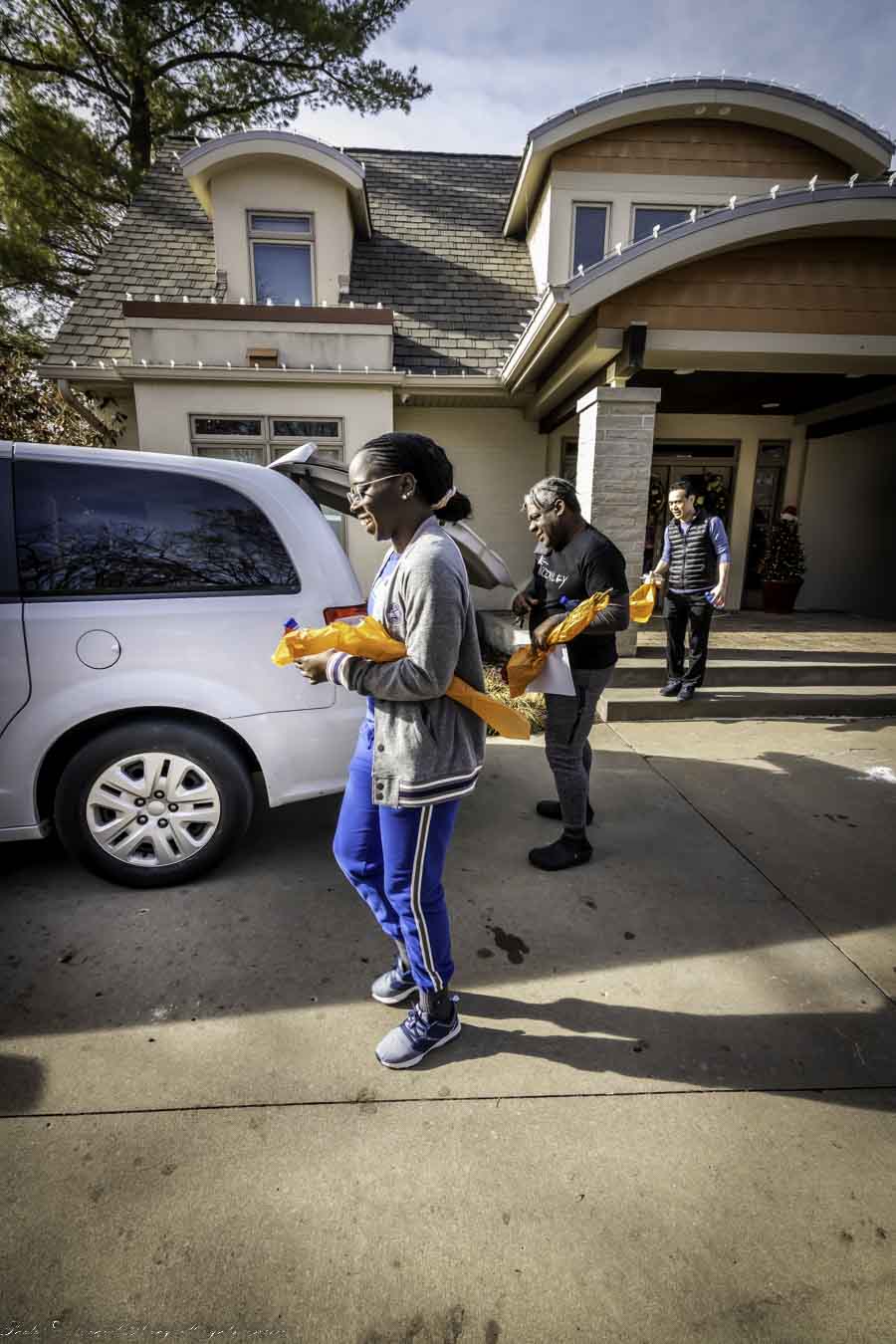
Lunch and rest before heading to Landon.
LEFT:
L-R: Kanji Segawa, Jacqueline Harris, Yazzmeen Laidler. In background, Tyrone Aiken at table with phone to his head.
RIGHT: Back on the road. Leaving the house to go to Landon, last school for the day. Front-Back: Yazzmeen Laidler, Tyrone Aiken, Kanji Segawa.
After Eisenhower the dancers headed a bit north and then west, again bypassing Brown v Board, heading for lunch and a bit of respite before continuing west to Fairlawn and then north, almost to the interstate, to Landon at 8th and Fairlawn, the northwest corner.
Landon - 1:30 pm
Landon Dual Language Middle School 6th-8th
731 SW Fairlawn, Topeka, KS 66606
Despite the "SW" in the street name, Landon is in the Northwest of Topeka. I am guessing that the numbering system is at fault, with the zeroth street address being the last address at the north end of the street. After that you hit the Kansas River and nothing on the other side. However, some of the streets are diagonal and I suspect the numbering is based off a diagonal. I've seen the same disorienting system elsewhere, such as in Hays.
Regardless, Landon is another famous Kansas name, Alf Landon. And his also famous daughter, Nancy Kassebaum. Alf Landon, who died at age 100 in 1987 was born in Pennsylvania and was governor of Kansas from 1933 (great depression time) to 1937. He was a liberal Republican, a graduate of the University of Kansas and an oil producer in Lawrence, Kansas. A millionaire.
His daughter Nancy Landon Kassebaum was US senator from 1978 to 1997. She married Senator Howard Baker of Tennessee in 1996, moving to Tennessee and so resigning from the senate after 21 years. Baker was part of the Senate Watergate Committee investigating President Richard Nixon, and remains famous for asking, "What did the President know and when did he know it?" That phrase has since taken on a life of its own.
In October 1983 Howard Baker was one of those senators who voted 78-22 to establish Martin Luther King Day as a federal holiday (3rd Monday of January, actual birth date 15 January 1929). He died in 2014 at age 88 from a stroke. Back then Kansas Republican senator (1997-2021) Pat Roberts, then a representative (1981-1997), also voted for the bill. The house vote was 338-90 (Dems 242-4, Reps 89-77).
https://en.wikipedia.org/wiki/Nancy_Kassebaum
https://en.wikipedia.org/wiki/Howard_Baker
https://en.wikipedia.org/wiki/Alf_Landon
https://en.wikipedia.org/wiki/Pat_Roberts
https://en.wikipedia.org/wiki/Martin_Luther_King_Jr._Day
https://news.yahoo.com/which-current-members-of-congress-voted-against-making-mlk-day-a-federal-holiday-190609235.html ("current" = Jan 2015 article)
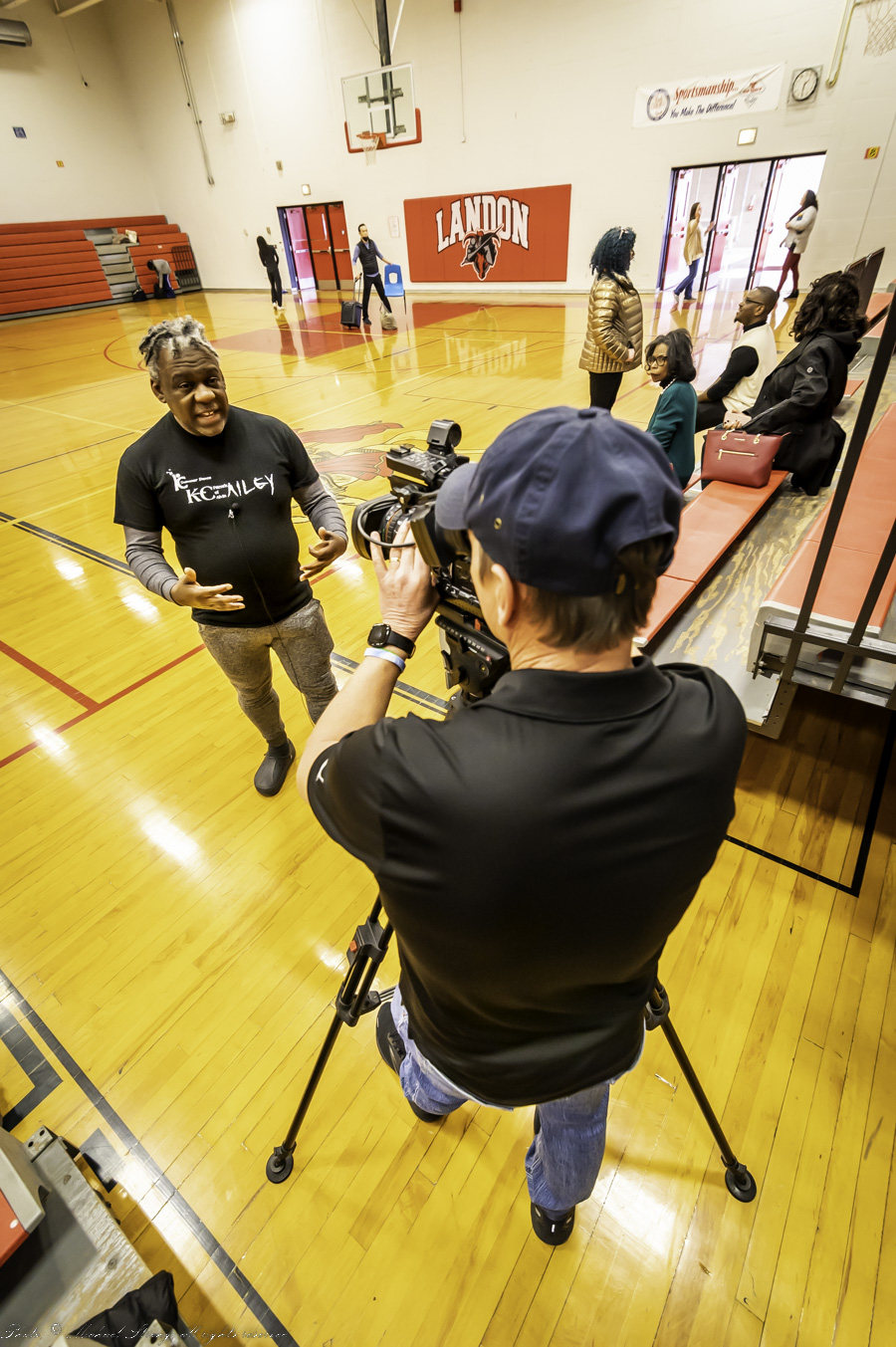

Left: WIBW putting Tyrone on camera for a CU head shot interview. Here the camera guy is in the center bleacher location.
Right: My camera is now set in the center position. Kanji is speaking. The WIBW guy is by the door, ready to exit as soon as he has just enough recorded for the newscast later.
Also note, Jason Jones (noted below) just behind the camera guy. He and all his students will take the floor leaving a couple teachers on the top row.
Time taken is 1:49 pm - I don't have a picture showing when he left. The next picture I have which shows his location (he is gone) is below, taken at 1:54 pm.
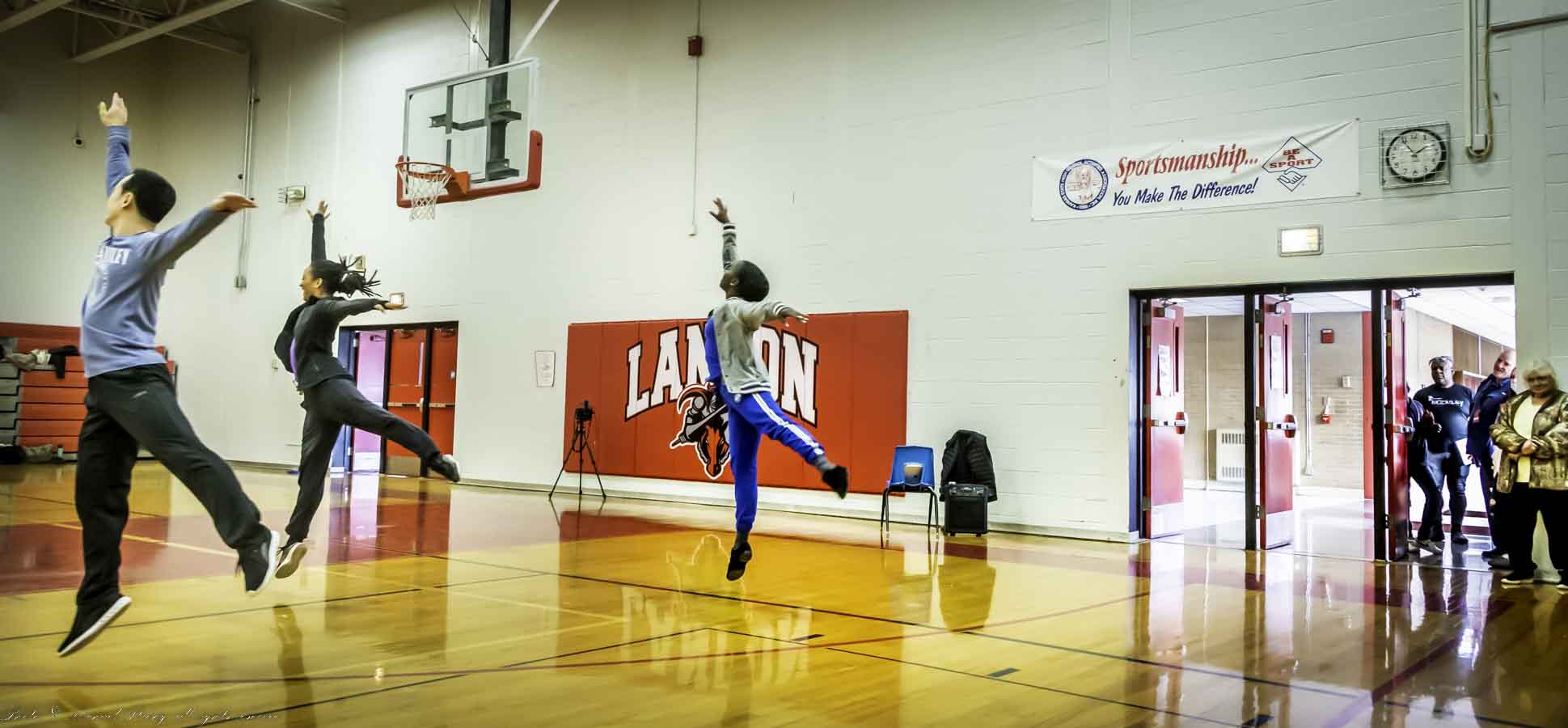
Kanji Segawa, Jacqueline Harris, Yazzmeen Laidler
At Landon school a videographer from WIBW-TV was setting up and waiting for us. He did a quick pair of head-and-shoulders interviews with Tyrone Aiken, KCFAA Chief Artistic Officer and with Links member Saundra Jackson. Then he took his tripod over to the side of the bleachers, right next to the exit. I headed over and said there was plenty of room and a better view from where I was setting up. He said no, and a few minutes later I realized why. I should have known. It is very common for the "big" local news teams or reporters to show up, get a few quotes and zip out the door. He did. He was still there when the first dance number started. He was gone within 3 or 4 minutes, 5 at the most. I have stills which show him in location and then when he is not there (see above two shots). He was there at 1:49 and gone by 1:54. But I don't have any stills (or video) of the exact moment he left.
https://www.wibw.com/2023/01/10/ny-dance-troupe-visits-topeka-students/
In all fairness, I've been in the same spot, when I have had several events to cover and have had to slip out of one event to cover another and then another and so forth. In upstate New York in the 1970's, on the Geneva Times (now the Finger Lakes Times) I might have several meetings to report on that day and evening for the next day's paper. And there might be a road accident or shooting or fire. Or maybe part of a feature I'm working on at a facility. So, I'm understanding, but I'm also a bit irritated with our profession. I do think journalism can give more, do better. Should do better. Especially larger outfits. Journalism is eroding at the edges and the middle and needs to pull its pants back up.
Journalism can give more attention to content and less to the impression of content. Impressions of content is a recurrent pattern, especially with dance and especially with television stations. Basically, they get a talking head for an "actuality," use 30 or so seconds and then 20 or more seconds of performance and throw that into a 30 minute news program. In this case it was a 50-second story, total, including the story's studio talking-head lede, 1/36th of the half hour or about 3% or less (50/1800*100=2.777%) of the total program time including commercials.
In commercial television, often as much as 1/3 of any time span is taken up by commercials. It certainly was when I started in radio in 1967 (also when I started in photography). I hate to say it but public broadcasting, especially television, now has enough funder messages that they occupy an increasing time slot, especially when they are passing the hat. Though, again, to be fair, not nearly as large a share of the time slot versus program content time as commercial broadcasting.
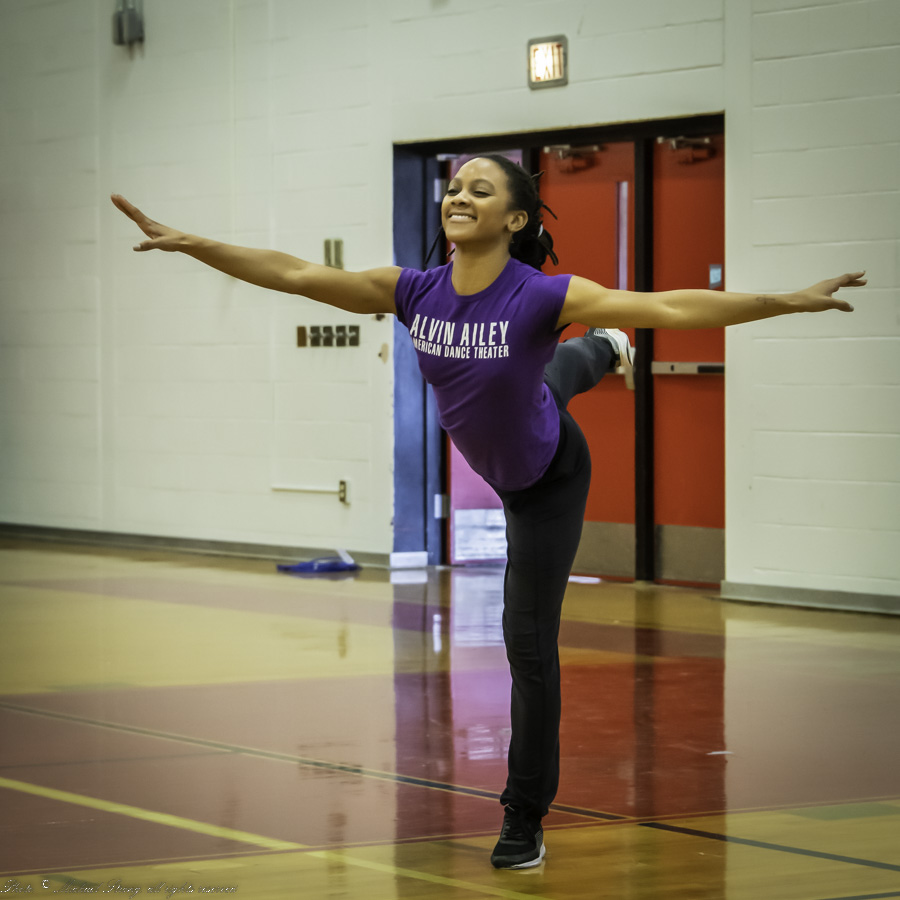
Jacqueline Harris
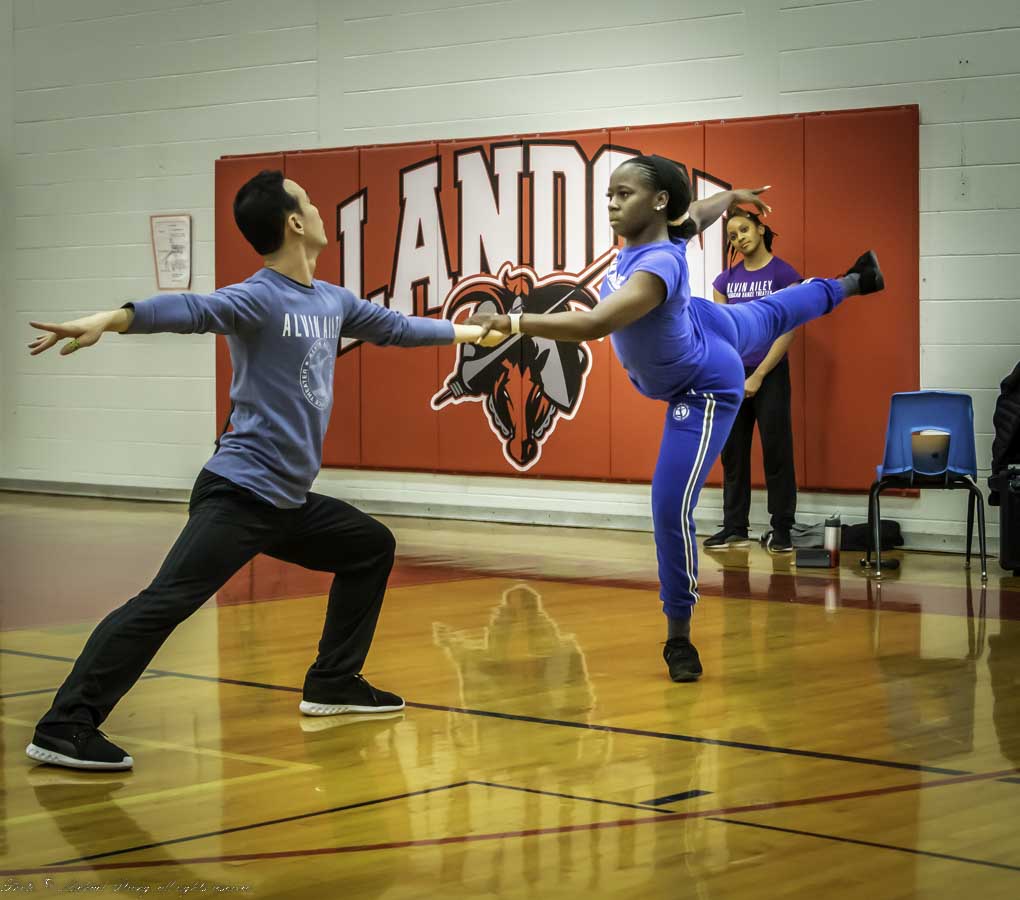
Kanji Segawa and Yazzmeen Laidler
Lottsa Dancers at Landon
 tap instructor for AileyCamp Kansas 2022.jpg)
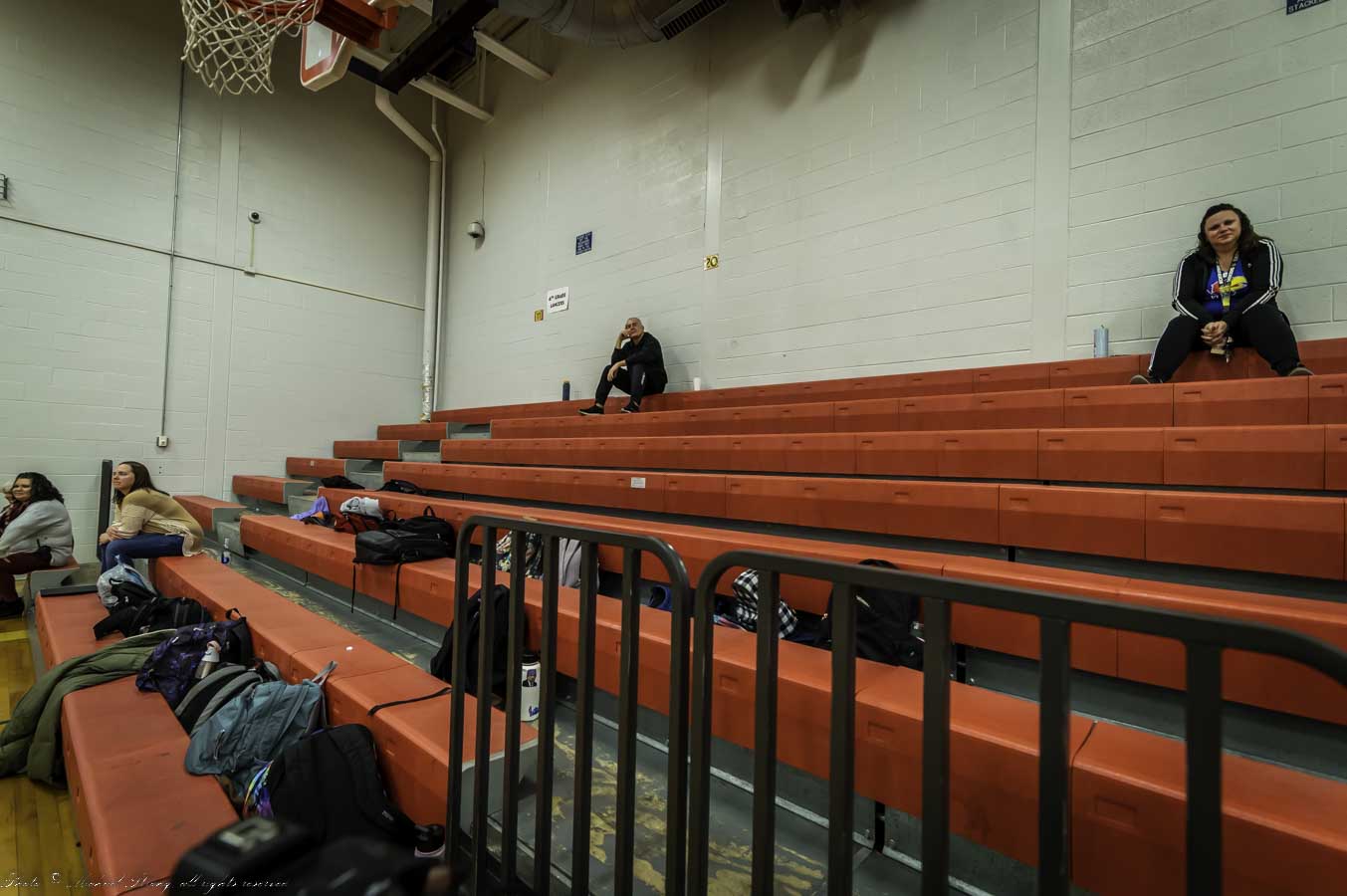
LEFT: Jason Jones (Ultramotion Studions in Topeka) in frame capture from video of final performance at AileyCamp Kansas, July 2022, where he was the tap instructor.
RIGHT: All students left the bleachers and came to the floor to dance. Only a few teachers remained.
Landon had a fairly small crowd on the bleachers, although more, I think than could fit into the small room at Eisenhower. But at Landon, ALL students came down for audience participation. Only the teachers, remained on the bleachers. But also, there was Jason Jones, company director of Ultramotion Studios. Jason is also on the staff of AileyCamp Kansas each summer, Jason Jones, was the tap instructor in 2022. The second I saw Jason at Landon, I knew he was going to come down and dance.
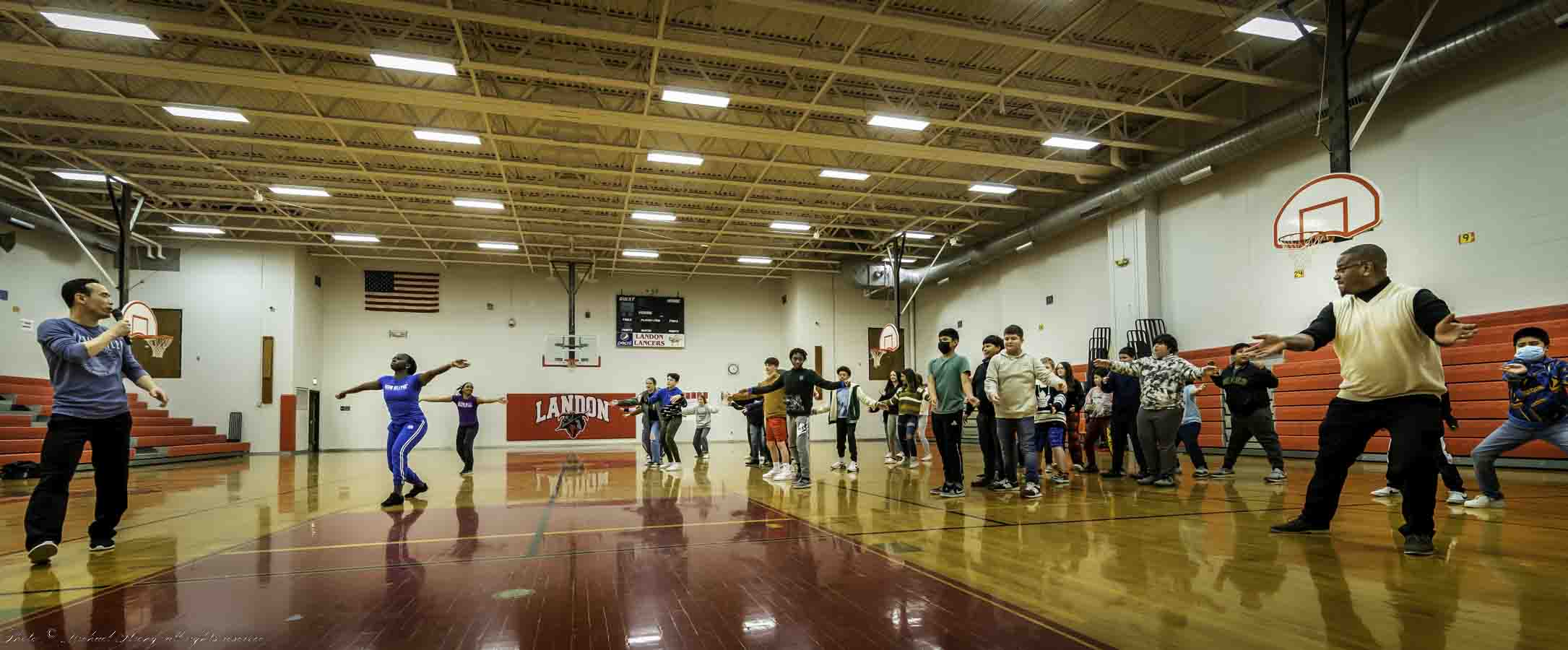
The audience participates, all students and Jason: L-Right in front: Kanji Segawa, Yassmeen Laidler, Jacqueline Harris, and at right is Jason Jones, Company director of UlraMotion, also an AileyCamp instructor.
Each summer KCFAA runs two AileyCamps at the same time, one in a Kansas City, Kansas School, which one tends to vary, and one in a Kansas City, Missouri school, the Paseo Academy of Fine and Performing Arts. Each school then has a final performance, normally Kansas first, then Missouri the next day.
Two Days Later, The GEM Theater - 7 pm, Thursday 12 January, 2023

Yazzmeen Laidler

Yazzmeen Laidler
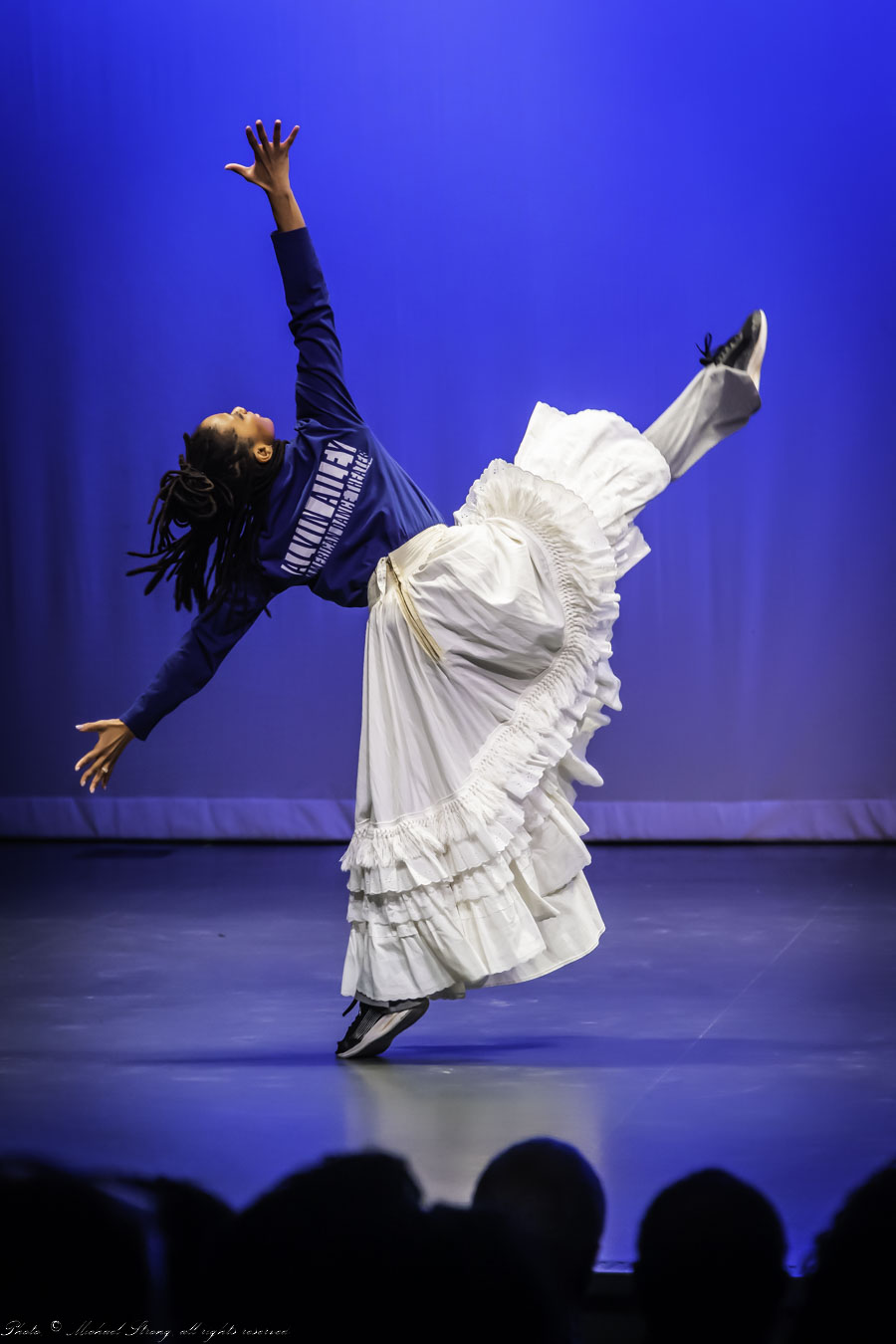
Jacqueline Harris
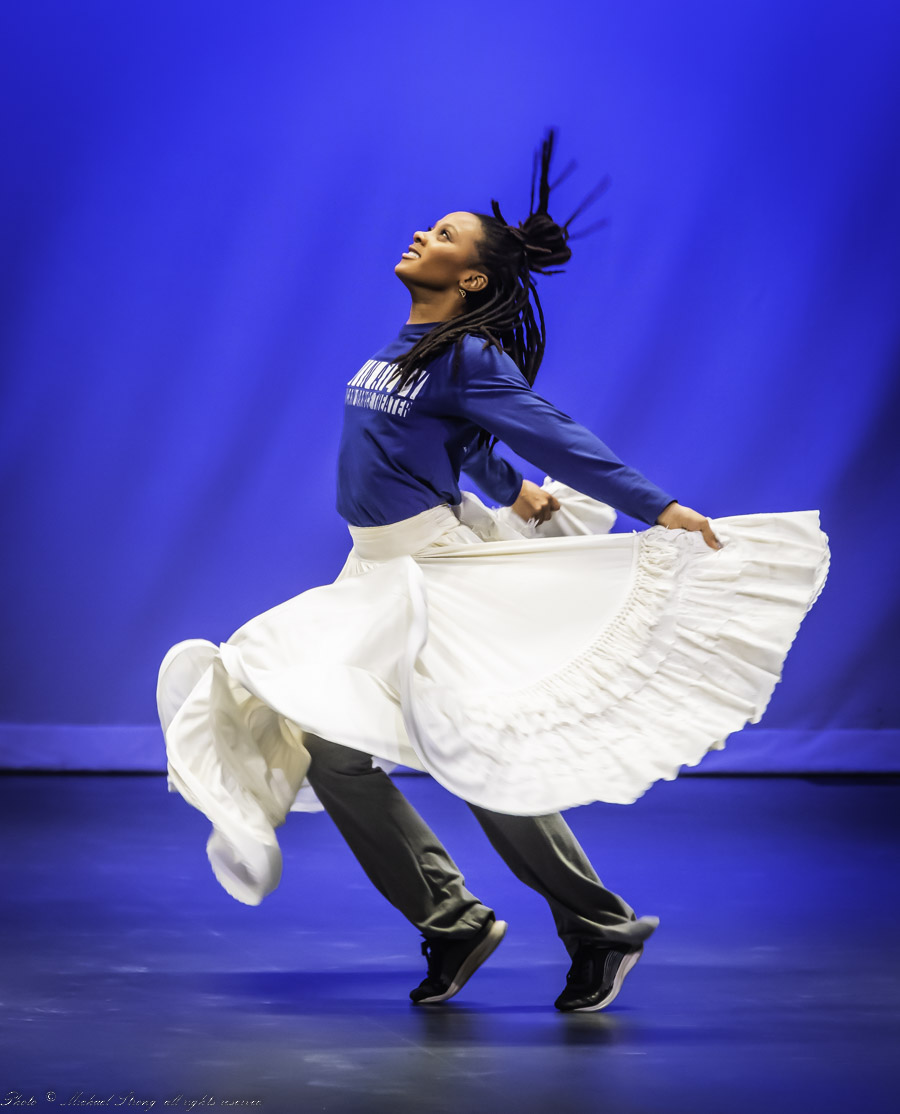
Jacqueline Harris
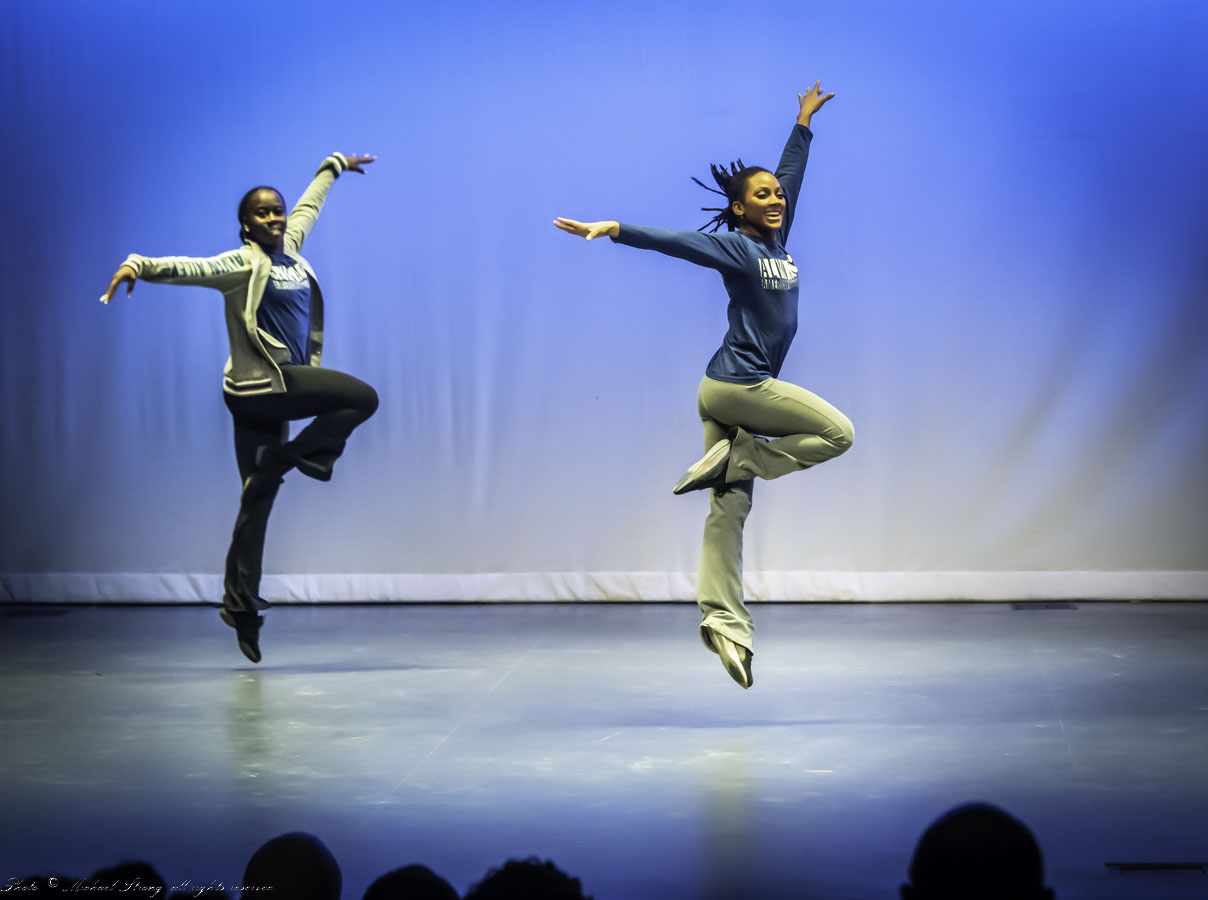
Yazzmeen Laidler and Jacqueline Harris at The GEM Thu Jan 12th
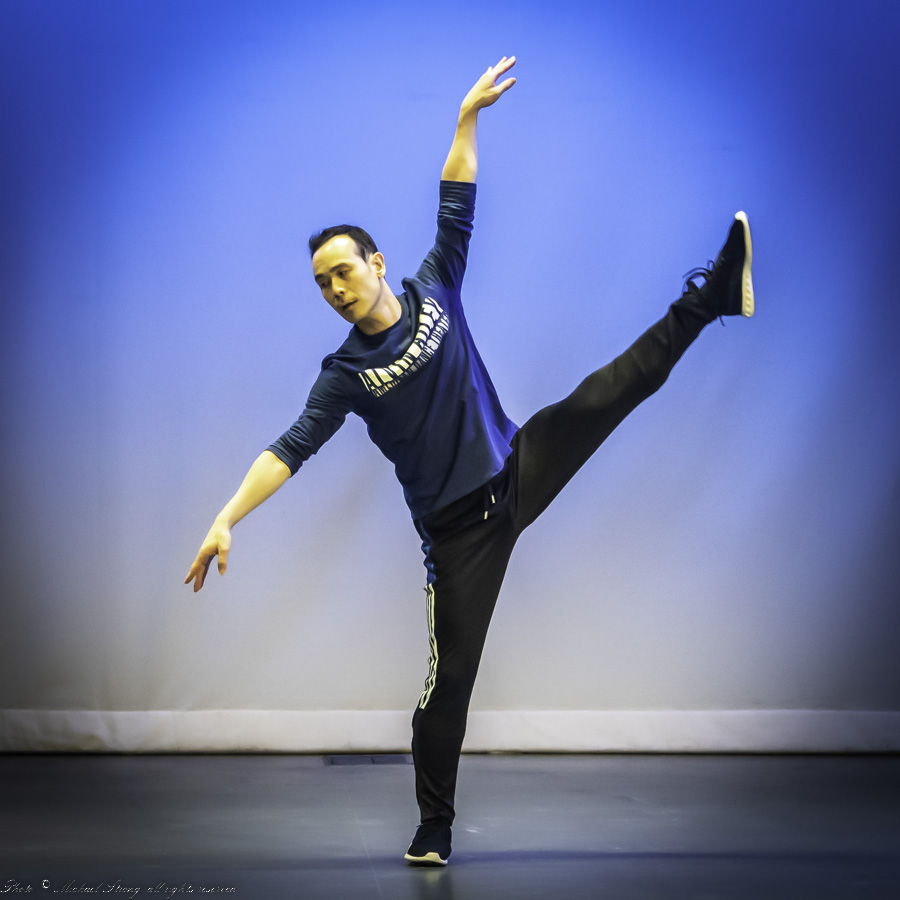
Kanji Segawa at The GEM Jan 12th
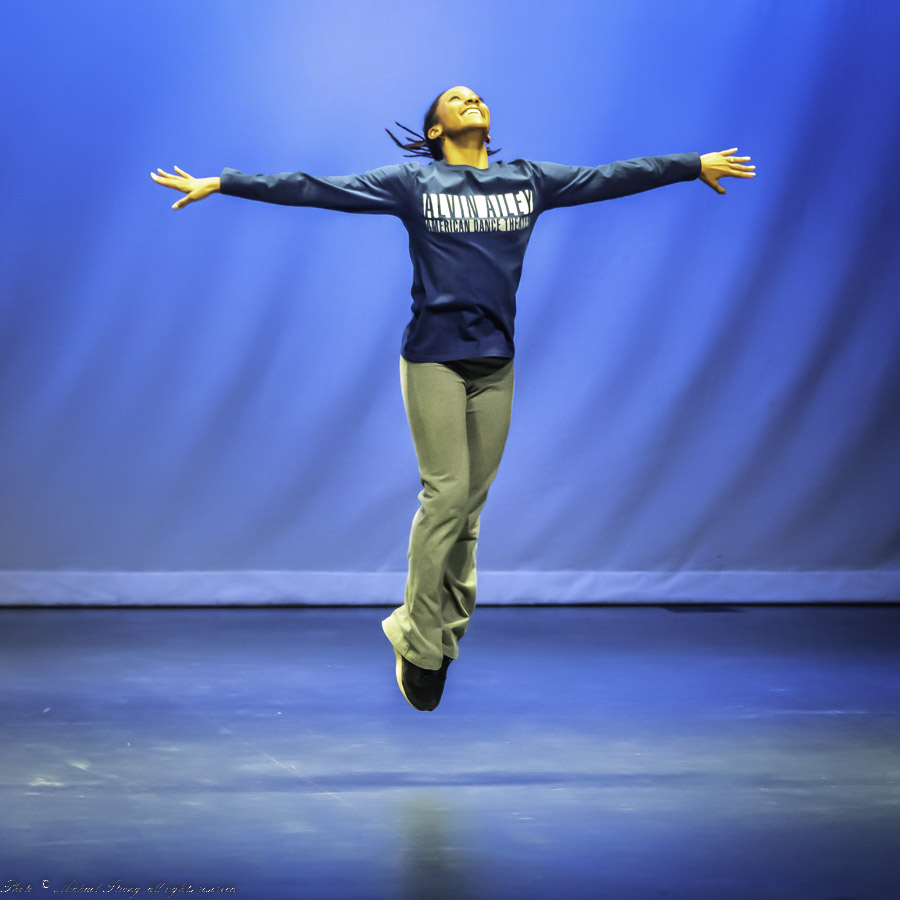
Jacqueline Harris
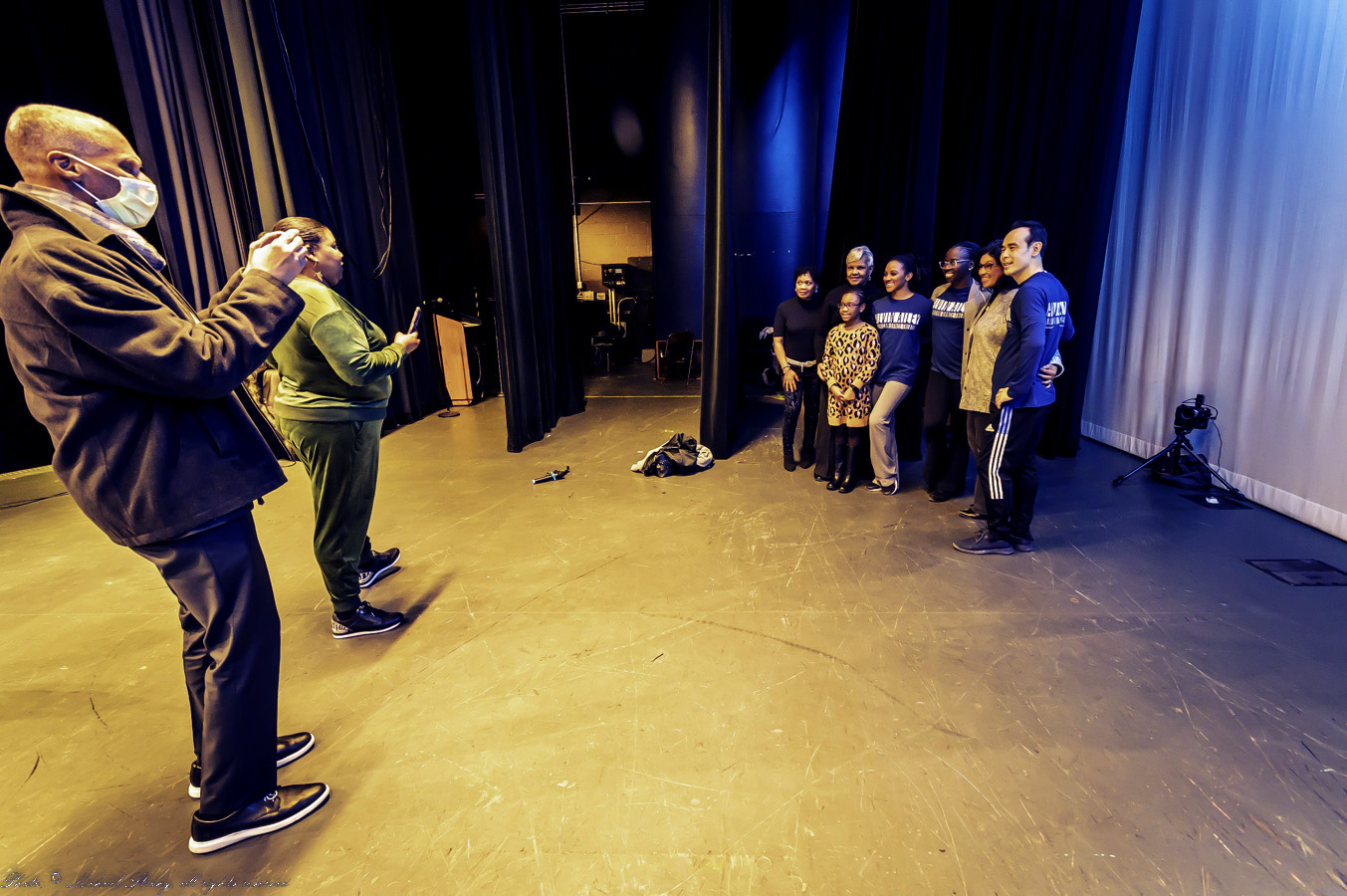
One last picture

Loading out, last bit of stuff, after Thursday performance. The near plaque in the walkway commemorates
jazz sax man and
sometimes clarinetist, Lester Young. The Jazz Museum is directly across the street from here.
I knew I would be able to get a better set of pictures at The Gem on technical grounds, more light. I can use a faster shutter speed at The GEM meaning crisper pictures at lower ISO (speed/sensitivity) ratings. The lower ISOs also mean less digital "noise," the digital equivalent of grain in film cameras. Also, the light here is more generic, normally a wash rather than tricky light.
There are actually dressing rooms backstage for the dancers. Before, they just threw jackets and kit on the floor or on opposite-side seating or on chairs in the wings (at Eisenhower). which I made a point of including in the school pictures. Such is life on the road.
The KCFAA board put on a reception ahead of the show. The dancers walked in and a speech or two was made, the buffet line lightly fed a few folks and then, down to the show. The GEM show has always been free and the crowds enthusiastic. The same for the 12th, enthusiastic crowds, just smaller. The pandemic is not yet fully gone, and you can see this in attendance at shows, such as this one. Still, the light gave me a chance to upgrade my pictures. I liked a lot of pictures from the schools two days before, but some had more motion blur or digital noise because of lower light levels.
2003 GEM memory and diversion:
Frankie Manning (left) and Buck O'Neil in April 2003 across the street from The GEM, at the American Jazz Museum /&/ Negro Leagues Baseball Museum. Manning was in town for a swing workshop at Louis Bar's studio, Louis and Company, in Overland Park, Kansas. I was taking him around and we headed across the street to the dual museum (and nightclub)when Buck O'Neil came out of the building. They both knew each other. O'Neil always recognized me too, although I don't think he remembered my name, maybe just my ever-present camera.
https://en.wikipedia.org/wiki/Buck_O%27Neil
FrankieManning02.asp - at Louis & Co, Overland Park, KS
https://en.wikipedia.org/wiki/Frankie_Manning
https://www.frankiemanningfoundation.org/frankie-manning/
https://www.frankiemanning.com/
Frankie was one of the original Whitey's Lindy Hoppers from the old Savoy Ballroom in New York City (torn down in 1959 with a bronze plaque in its stead).
Direct URL: https://www.youtube.com/watch?v=hubzPVG3f28
Should note: The original resolution seems not to have been preserved on YouTube. What is left is now at 240p, which is at best 1/4 of what I had originally. In the meantime, here is the embed with 89-year old Frankie Manning:
Buck was featured in "Music of Our Lives" the next year (2004) produced by Billie Mahoney and I shot the stills and video. So we were acquainted that way. Buck was slated to be in the repeat production two years later (2006) but died a few weeks before the program, age 94. So, I edited a tribute with the full previous performance from two years before.
Direct URL: https://vimeo.com/236514263 or the embed below.
(L-R at start) Tony Carruthers, Buck O'Neil, Bill Worley (2004)
Back to our 2023 musings, ramblings and even direct reporting around the Trio's tour.
Fini
Appreciation by Comparisons: Side-by-Side and Cross Cutting
Below I am posting two video links and also, their embed code (the player windows at the bottom). This is not a full performance edit. I made one each for The Links' sponsorship of the three schools in Topeka. Those three went to the Topeka Chapter. And I made a full edit, including the reception speech beforehand, at The GEM. That full video went to KCFAA. The video windows below are my own combined-performance edits from both the Links and KCFAA. So, they reside on my site, as reportage.
The videos are the "same" except that one uses cuts between the performances where the motion is at a peak, and the other uses separate performances placed sided-by-side in the frame.
A brief word of explanation, although my intro, which is the same intro for both, will repeat this. But you can read the text here faster.
Ten years before, in the 2013 Trio visit, I did a comparison video. My intent then (as now) was to show off the dancers. They looked so natural, as I stated then, that you could think they were freestyling. They are not. By putting them directly together, you can see how precisely they maintain the choreography in across performances. Despite different times, different locations, different floors, different types of venue and different dates, they look almost as if the cameras were shooting a single performance - except for costume shifts and backgrounds.
That takes practice, a lot of practice - rehearsal - not just to get the steps and timing but to look as though you were acting purely on impulse, in the moment, fully in character.
Along with practice come "notes." Notes are the way you hone your performance. Good notes are not criticism. For example, when I shoot pictures or video of Nicole in performance she won't let me delete images showing when she may have a foot wrong, or arm or something else. She is always evaluating. What was good, what needs to change for the next time and so forth. Most audiences see the final performance without being aware of the constant effort and focus on nailing down the myriad details in executing choreography. I'm just not going to show the "off" pictures.
The side-by-side view allows you to see the full video of each piece (including my out-of-frame goofs when I am shooting stills and don't get back to the video camera fast enough), giving your brain enough time to take in all views, whether two, three or four performances. In a regular editing I hide those by cutting to another camera, usually a wide-coverage angle.
The cross-cut (cutting between different performances) view allows you to concentrate on the movement even as the backgrounds, spaces and, from day to day, dress changes.
In both cases my intent is that you see the dancer rather than my editing. In 2013 I showed this to another videographer, a good videographer. But I realized that I missed my intended aim when he, naturally, responded as a videographer and video editor, complementing my "motion matching." Because I am also a programmer and an interface designer, that says to me that I needed to do something else to get my intention across.
For example, I grew up in a glass shop. My dad's attention, in a restaurant would seem to wander. He would seem to be looking out the windows. But he was looking at the glass and the mountings, the hardware, wood or aluminum. That was his business and what he was most aware of. We had a family friend, Walt Plugge who made the cabinets in our kitchen. It is what he did. Every time he came over, he went over to the cabinets and opened the doors, just to check them out. The bet was on how long it would take for Walt to check out the cabinets he had built. Or, my grandfather, a dentist. He and my grandmother remembered people by dental features, such as closed bite, or something else like that. We see what we know best.
In the case of the edited video with "motion matching" when I showed it to dancers, I thought I had succeeded. When I showed it to an editor, he saw editing. I realized that it needed an introduction which explained what we are looking for in dance. Otherwise, each person will see only what they understand and that may not be dance. Often isn't. Athletes will appreciate the athletic ability but may not be aware of the small choreographic details such as how you hold your hand at a particular moment and then change it on the next musical note. That part is not something athletes do, repeat some movement exactly. Seeing the movements across performances shows that repeatability.
So, here we go - starting with an intro voice-over while showing part of the 2013 video with inter-performance cuts:
Version 1: Side-by-side full-frame comparisons
This synchs all tracks on the music and shows different performances to the same music.
The direct link: https://vimeo.com/791588151
Version 2: Cross cutting between performances
This synchs all tracks on the music and cuts on motion.
The direct link: https://vimeo.com/791588276
The dancers were back in New York City in time for Martin Luther King day, Monday, January 16th, 2023. All day!
Cheers, and thanks,
Mike Strong
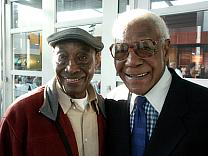
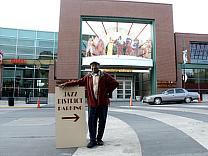
 Email This Page
Email This Page